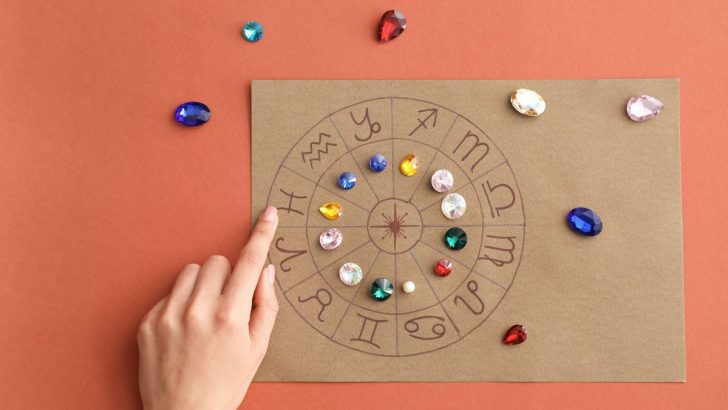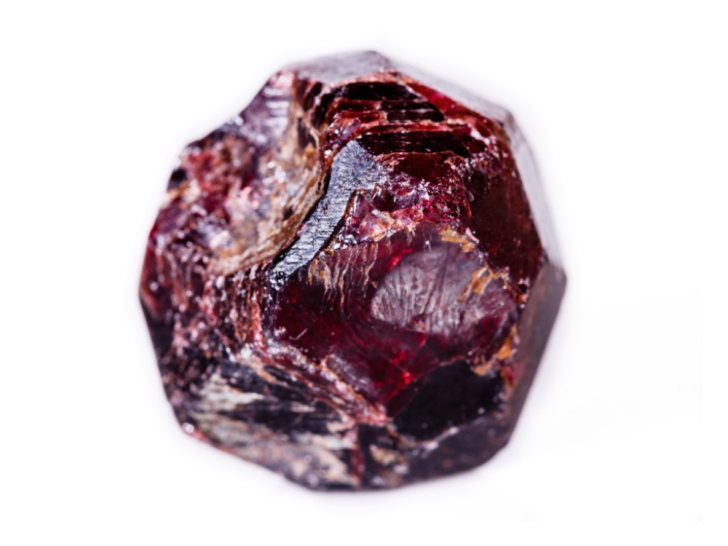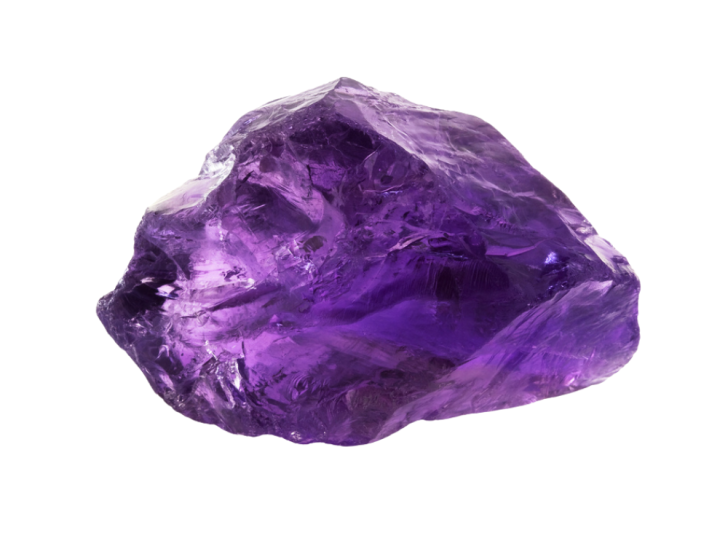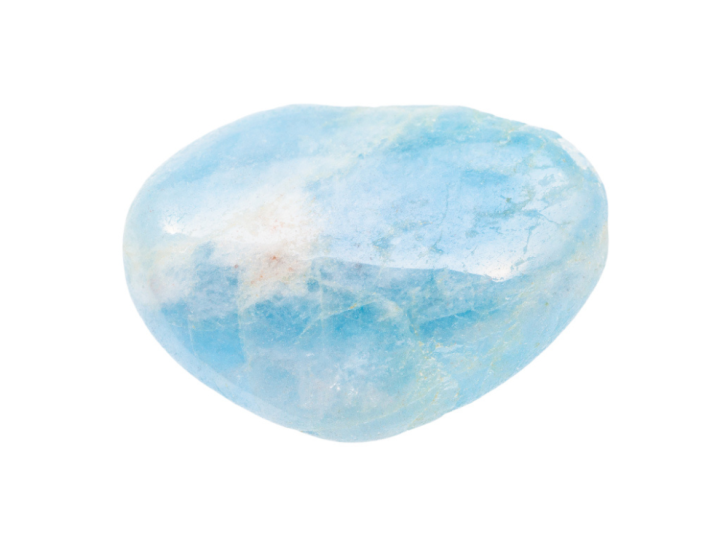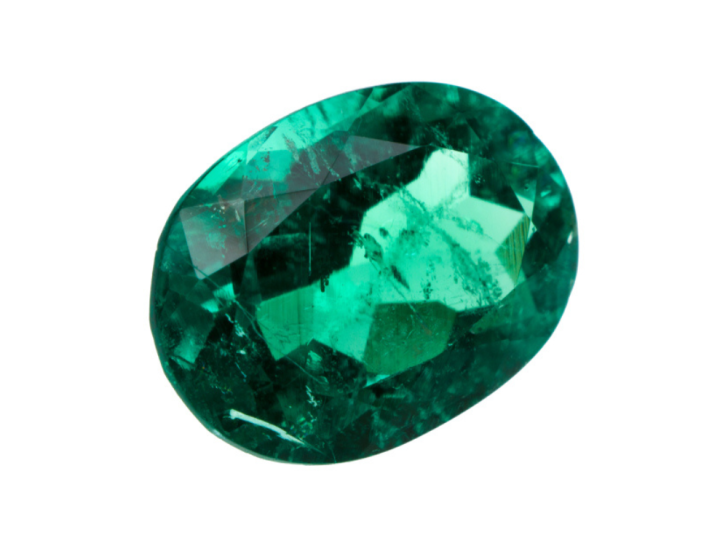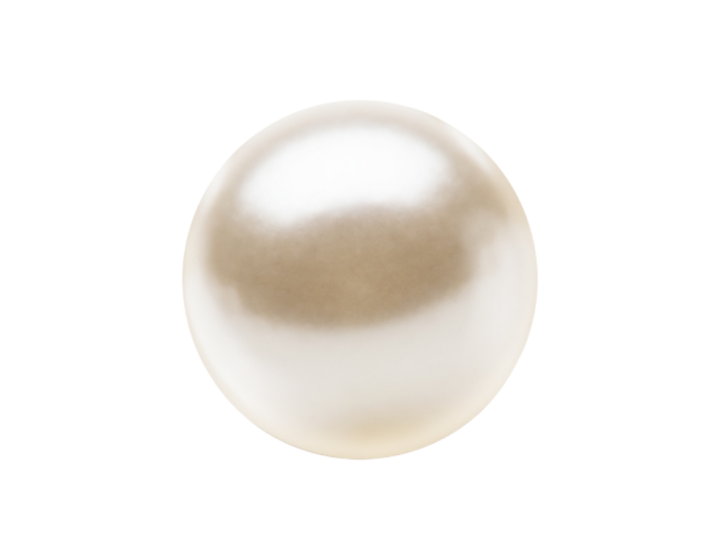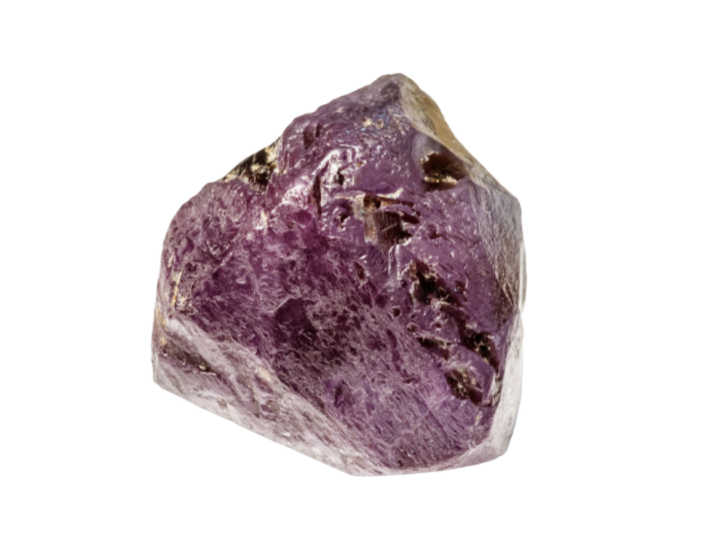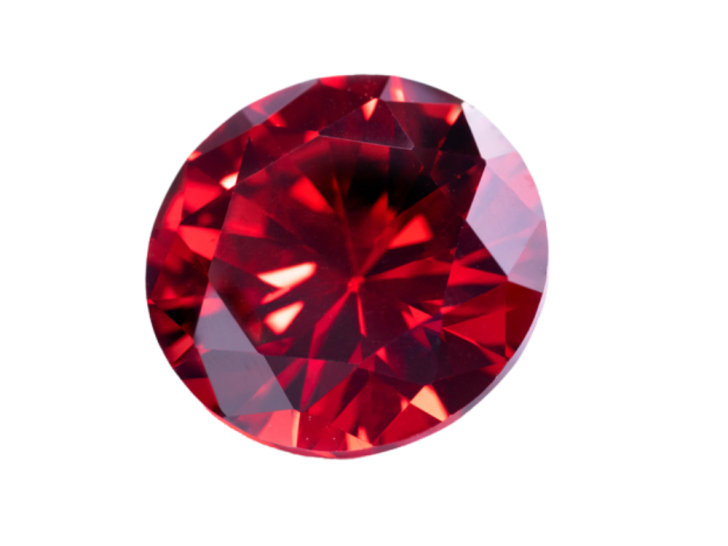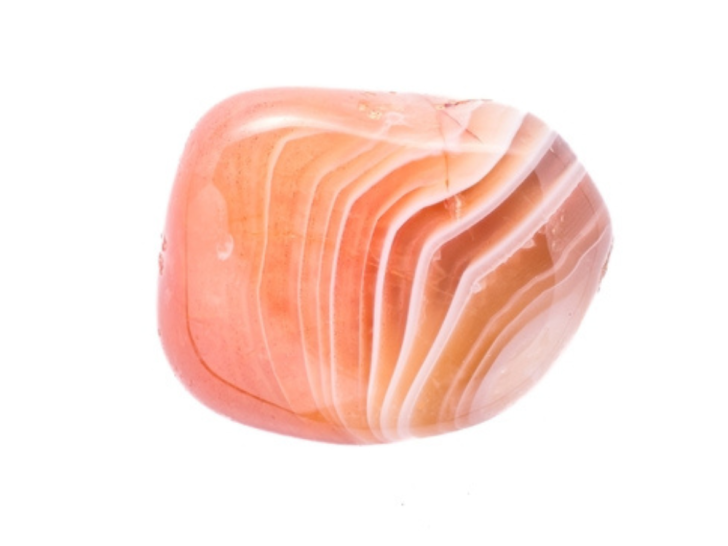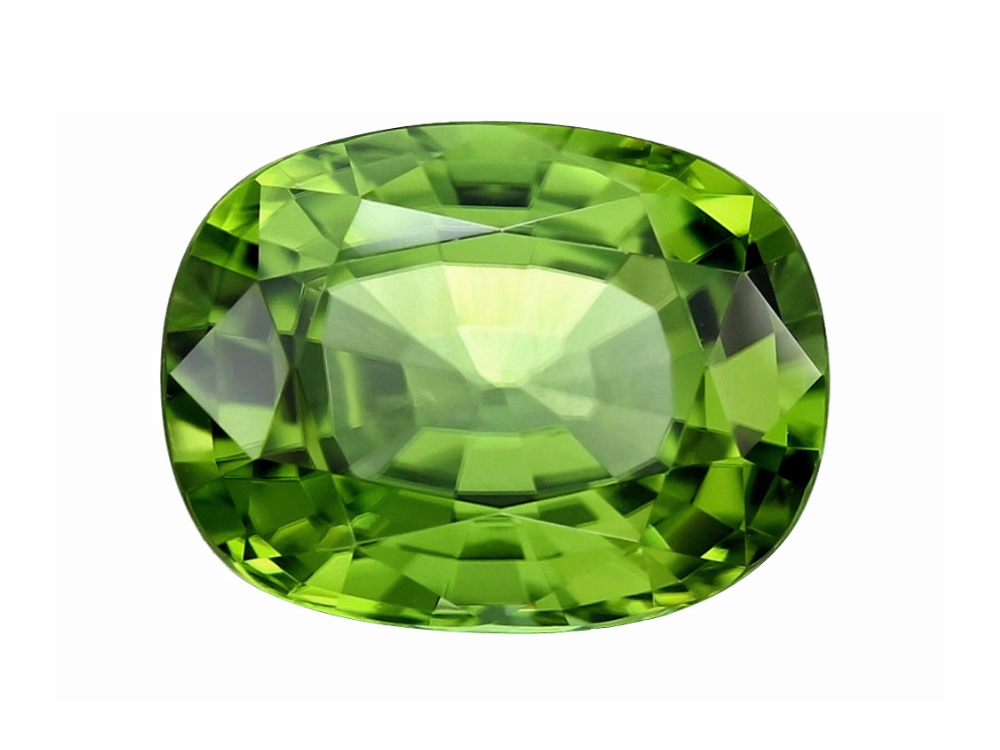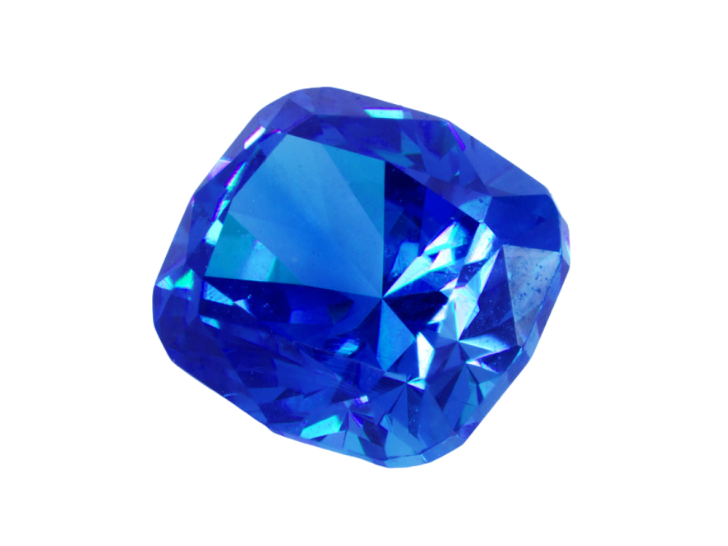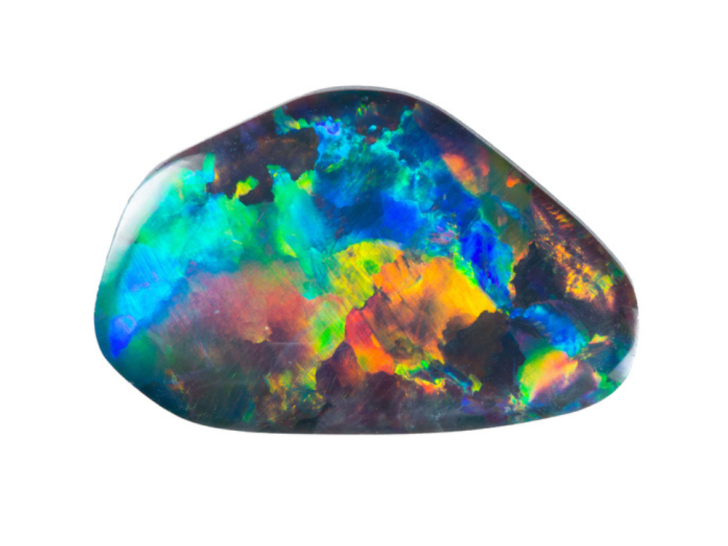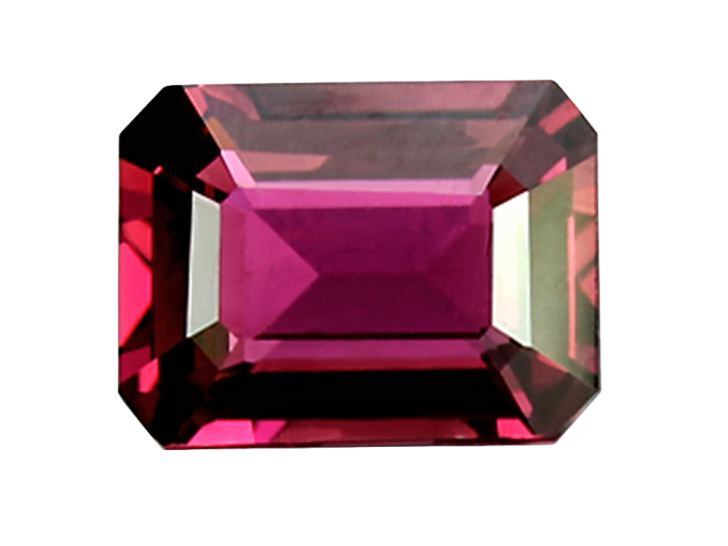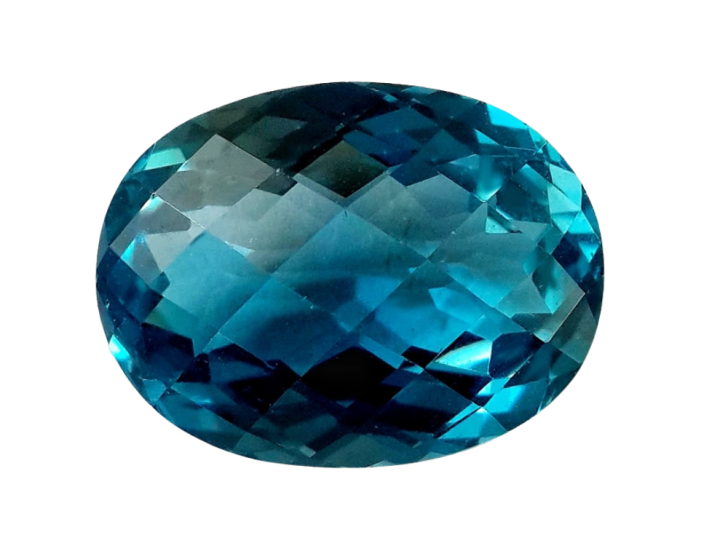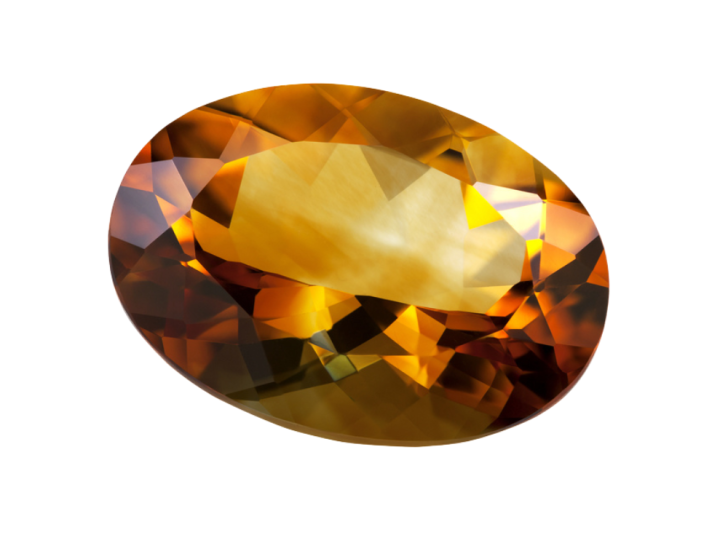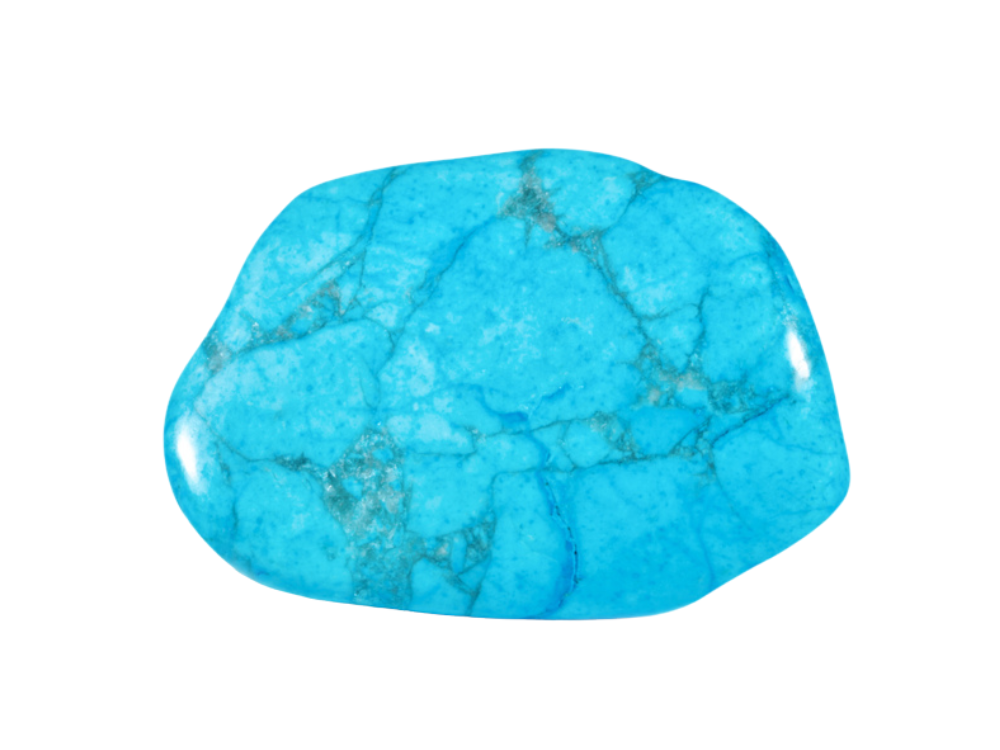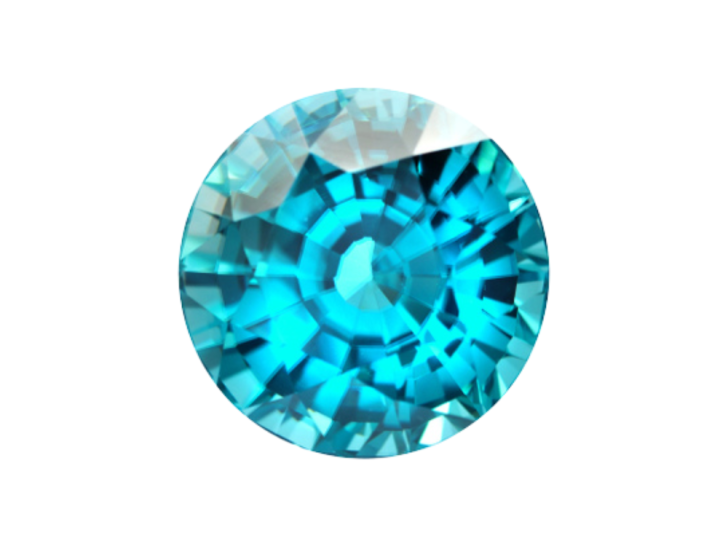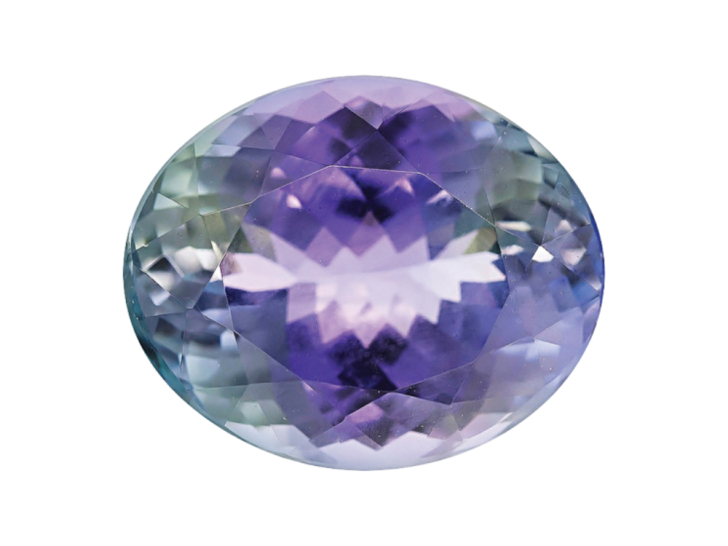Welcome to our comprehensive guide on birthstones, those enchanting gems linked to each month that hold deep significance and symbolism in various cultures.
In this introductory article, we’ll give an overview of birthstones, their significance, and the captivating meanings they carry across different traditions.
As you delve into this fascinating world of vibrant stones, you’ll uncover how they’ve become cherished symbols of self-expression, heritage, and personal growth.
Birthstones, often associated with specific months of the year, have been celebrated for centuries as unique representations of one’s personality, strengths, and aspirations. These precious gemstones have captured people’s hearts and imaginations around the world; each culture attaching its own symbolic value and significance to these captivating stones.
Birthstones have long been an integral part of societies around the world, their significance rooted in folklore, religion and mythology. From ancient civilizations to modern-day practices, the allure of these gems continues to endure, influencing everything from fashion to spirituality.
In the following blog post, let us delve deep into the world of birthstones, exploring their history, symbolism and cultural significance. We’ll also reveal the unique properties of each stone, and uncover the ways in which they can enrich your life, whether as a treasured gift or a personal keepsake. So come join us on this captivating journey as we unravel the magic and mystery surrounding birthstones!
Key Points:
- Birthstones have a long and fascinating history, with cultural significance in many different parts of the world.
- Each month’s birthstone has unique meanings and symbolism, as well as potential healing properties.
- Over time, different lists of birthstones have been developed, including traditional and alternative options.
- Choosing the right birthstone jewelry involves understanding the symbolism and properties of the stone, as well as considering personal style and preferences.
- Caring for birthstone jewelry properly can help it last for years to come, and there are many different ways to incorporate birthstones into gifts and special occasions.
The Ancient History and Origins of Birthstones
Biblical Birthstones: The Breastplate of Aaron
Birthstones have their origins in the Bible, specifically Exodus (28:15-21). In this sacred text, High Priest Aaron donned a breastplate adorned with twelve gemstones representing each of Israel’s twelve tribes (source: Chabad.org). Later scholars such as George Frederick Kunz connected these stones to the twelve signs of the zodiac and the twelve months of the year.
The twelve stones mentioned in the Book of Exodus are:
- Ruby
- Topaz
- Emerald
- Turquoise
- Sapphire
- Diamond
- Jacinth (Orange or Red Zircon)
- Agate
- Amethyst
- Beryl
- Onyx
- Jasper
Over time, the concept of birthstones evolved, with people ascribing specific stones to particular months, resulting in the modern-day birthstone tradition (source: GIA).
Ancient Greek and Roman Gemstones: Magical Properties and Divine Connections

Ancient Greece and Rome both contributed to the lore surrounding birthstones. They believed that gemstones held magical properties and that wearing them could bring protection, luck, and health. The philosopher Theophrastus even wrote a treatise about stones’ mystical and medicinal properties in his treatise “On Stones.”
Furthermore, ancient Greeks associated gemstones with their gods, linking them to various planets and astrological signs. For instance, Amethyst was believed to protect against drunkenness due to its connection to Dionysus (source: GIA), while Romans associated Emeralds with Venus, attributing the stone with love and fertility (source: GIA).
In addition to their divine connections, ancient Greeks and Romans used gemstones as talismans or amulets, often inscribing them with images or symbols for added protection (source: Getty). These cultural practices further cemented the significance of gemstones in the ancient world and formed the basis for evolving beliefs surrounding birthstones today.
By delving into the fascinating history of biblical birthstones and their magical properties attributed to ancient Greek and Roman gems, we gain a greater appreciation for their timeless allure and cultural significance.
As birthstones continue to fascinate people around the world, the captivating stories and beliefs from our ancient past remain an integral part of our shared heritage.
India has a long-standing tradition of gemstone appreciation, with ancient texts such as the Garuda Purana detailing the significance of various stones (source: Garuda Purana). In addition, Jyotish astrologers believed certain gemstones could counteract adverse effects caused by planetary alignments in an individual’s horoscope – this practice, known as “Navaratna” or “nine gems,” remains prevalent today.
The nine stones in the Navaratna system are:
- Ruby (Sun)
- Pearl (Moon)
- Red Coral (Mars)
- Emerald (Mercury)
- Yellow Sapphire (Jupiter)
- Diamond (Venus)
- Blue Sapphire (Saturn)
- Hessonite (Rahu)
- Cat’s Eye (Ketu)
In the Middle East, ancient Arab culture had long believed in the protective powers of gemstones. Al-Biruni, an esteemed Persian scholar, wrote a treatise on gemstones in the 11th century called “The Book of Precious Stones” (source: Al-Biruni, “Kitab al-Jamahir”) where he discussed their connections to planets, zodiac signs and gemstones as well as their potential therapeutic and talismanic powers.
Islamic tradition recognizes the significance of gemstones, with several mentioned in the Quran, such as the “sabz,” or green gemstone, which is believed to be one of Paradise’s adornments. Furthermore, various gemstones were highly prized by India’s Mughal emperors who were heavily influenced by Persian and Central Asian cultures.
Birthstones have a long and fascinating history in various cultures and belief systems around the world, from Biblical breastplates to Middle Eastern traditions.
From their mystical associations in Greek and Roman mythologies to those found throughout India and Middle Eastern legends, birthstones have captivated humanity for centuries. Their diverse lore continues to inspire and enchant people around the world today – truly making them part of our cultural heritage.
Development of Birthstone Lists Over Time
As we delve into the fascinating history of birthstones, it is essential to understand how the concept has evolved over time. In this section, we will explore the development of birthstone lists, from traditional birthstones to modern and alternative birthstones.
By examining these changes, we gain insight into the captivating allure of these precious stones and their enduring significance in our lives.
Development of Birthstone Lists Over Time: Traditional Birthstones
Traditional birthstones are those that have been associated with specific months for centuries.
These lists often have their roots in ancient cultures, such as the biblical breastplate of Aaron, which featured twelve gemstones representing the twelve tribes of Israel (source: Jewish Virtual Library). Other historical sources, such as the writings of George Frederick Kunz, have also contributed to the development of traditional birthstone lists.
In his book, “The Curious Lore of Precious Stones,” Kunz explores the various historical origins of birthstones, from the breastplate of Aaron to medieval and Renaissance beliefs about the power of gemstones.
He notes that many traditional birthstones have been linked to specific months based on their availability, cultural significance, or perceived powers.
The traditional birthstones (source: GIA) are as follows:
January: Garnet
A stone that was popular in ancient Rome and associated with protection and vitality.
February: Amethyst
Prized by ancient Greeks for its believed ability to prevent drunkenness and promote sobriety.
March: Bloodstone or Aquamarine
Bloodstone was revered for its healing properties, while Aquamarine was thought to protect sailors at sea.
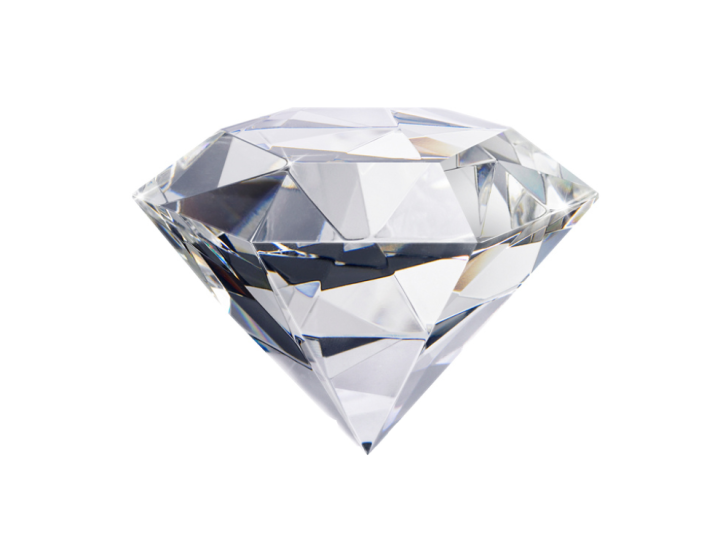
April: Diamond
A symbol of love and commitment, with ancient Romans believing Diamonds were shards of fallen stars.
May: Emerald
A symbol of rebirth and love, associated with the goddess Venus in Roman mythology.
June: Pearl or Alexandrite
Pearls have been cherished for their natural beauty, while the rare Alexandrite exhibits color-changing properties.
July: Ruby
Considered the king of gemstones and a symbol of passion, protection, and prosperity.
September: Sapphire
A symbol of wisdom, loyalty, and nobility, often worn by royalty and clergy.
October: Opal or Tourmaline
Opals were thought to bring good luck, while Tourmaline was believed to have healing and protective properties.
December: Turquoise, Zircon, or Tanzanite
Turquoise has long been prized for its vibrant color and was believed to bring protection and good fortune, while Zircon was thought to have healing properties and promote sleep. Tanzanite, a more recent discovery, is admired for its striking blue-violet color.
In summary, traditional birthstones have a rich history rooted in ancient cultures, mythology, and beliefs about the mystical and healing properties of gemstones.
The enduring appeal of these stones continues to captivate people today, with many still cherishing the traditional birthstones as symbols of personal identity, protection, and luck.
By understanding the historical origins and significance of these precious gems, we can appreciate the deep cultural connections and fascinating lore surrounding the tradition of birthstones.
Development of Birthstone Lists Over Time: Alternative Birthstones
Over time, alternative birthstone lists have also emerged, offering additional options for those seeking variety or more affordable choices. These alternative birthstones may be based on regional preferences, historical associations, or the availability of particular gemstones.
Some alternative birthstones are also rooted in ancient traditions, such as Ayurvedic or mystical birthstones.
Examples of alternative birthstones include:
- January: Red Zircon or Rose Quartz – Red Zircon is a more affordable alternative to Garnet, while Rose Quartz is known for promoting love and emotional healing
- February: Onyx or Green Amethyst – Onyx is believed to offer protection and strength, while Green Amethyst, also known as Prasiolite, is a rarer form of Quartz that promotes spiritual growth
- March: Jasper or Bloodstone – Jasper is a versatile and affordable gemstone, while Bloodstone is an alternative traditional birthstone for March, known for its healing properties
- April: White Topaz or Rock Crystal – White Topaz is a more affordable alternative to Diamond, while rock crystal is a transparent form of Quartz believed to have cleansing properties
- May: Chrysoprase or Green Onyx – Chrysoprase is a vibrant green Chalcedony that promotes joy and optimism, while Green Onyx is believed to have protective qualities
- June: Rhodolite or Cat’s Eye – Rhodolite is a variety of Garnet with a unique raspberry-red color, while Cat’s Eye, also known as Chrysoberyl, is prized for its distinctive chatoyancy
- July: Carnelian or Red Agate – Carnelian is a reddish-orange variety of Chalcedony believed to promote courage and vitality, while Red Agate is believed to bring stability and balance
- August: Amazonite or Green Jasper – Amazonite is a vibrant green gemstone thought to promote harmony and balance, while Green Jasper is believed to have nurturing and protective qualities
- September: Lapis Lazuli or Iolite – Lapis Lazuli is a deep blue gemstone with a long history of spiritual and artistic significance, while Iolite is a more affordable alternative to Sapphire, known as the “water Sapphire”
- October: Pink Tourmaline or Zircon – Pink Tourmaline is a popular alternative to opal, believed to promote love and emotional healing, while Zircon is an affordable and versatile gemstone that comes in a variety of colors
- November: Golden Topaz or Amber – Golden Topaz is a more affordable alternative to Yellow Topaz, while Amber is an organic gemstone known for its warm golden hues and historical significance
- December: Blue Topaz, Lapis Lazuli, or Malachite – Blue Topaz is a popular and affordable alternative to Turquoise and Zircon, while Malachite is a vibrant green gemstone believed to promote transformation and healing
Birthstones have a rich and ancient history that spans across cultures and time. From traditional stones with roots in antiquity to modern and alternative gems that reflect contemporary tastes and preferences, these precious stones continue to fascinate and enchant people around the world.
While celebrating their diverse lore and heritage, we also acknowledge their important role as symbols of love, protection and connection to our past.
By exploring alternative birthstones, we can express ourselves uniquely while honoring their rich significance and history.
Birthstone Meanings, Symbolism, and Healing Properties
January: Garnet Meaning and Symbolism
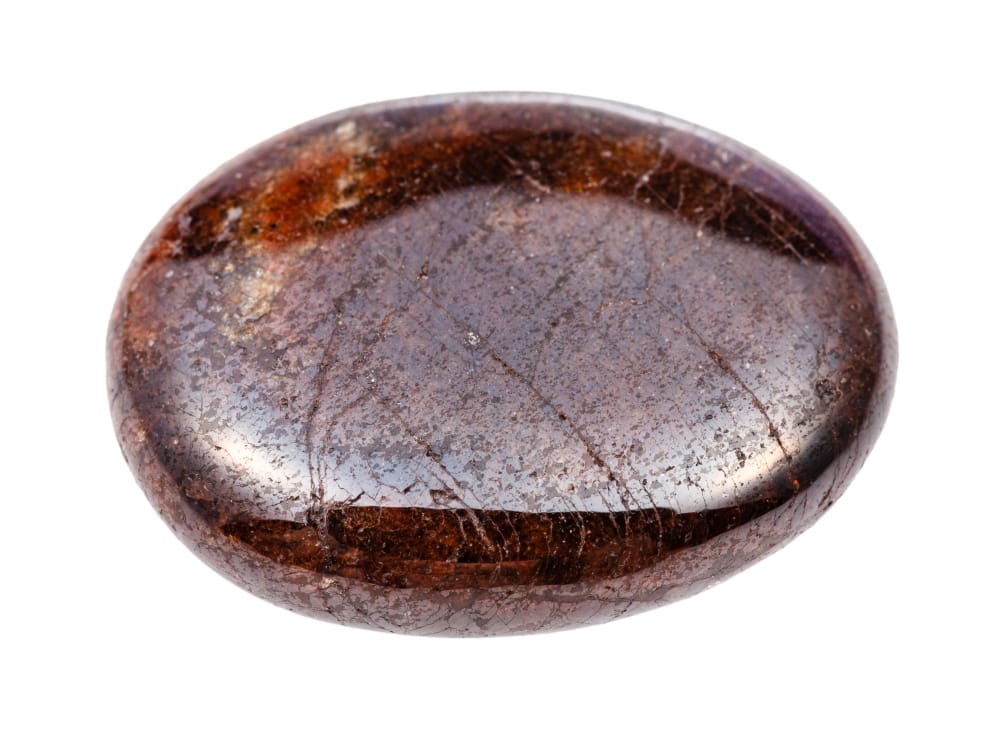
Explore the captivating world of Garnet, the beloved January birthstone. Let’s explore its fascinating history, symbolism and healing properties that have made it such a popular gemstone for centuries.
Garnet History and Origins
Garnet has a rich and ancient history, dating back over 5,000 years to ancient Egypt, Rome and Greece. The name itself comes from Latin “granatum,” meaning “pomegranate,” due to its resemblance to the fruit’s seeds. Valued for both its beauty and protective qualities, Garnet played an integral role in various mythologies.
In Greek mythology, Hades gave Persephone a Garnet to ensure her safe return from the underworld. Hindu culture associates Garnet with the sun and believes it dispels darkness.
Additionally, Garnets have long been used as symbols of love, passion and friendship – often exchanged between lovers as a sign of loyalty and affection.
Garnet Properties and Symbolism
Garnets are silicate minerals found in colors such as red, orange, yellow, green and purple. The most famous hue is a deep and rich red. Each color holds unique meaning and symbolism.
Deep red Garnet (or Almandine and Pyrope), symbolizes love, devotion, and passion. It is said to promote strong relationships and emotional balance. Orange Garnet (Spessartine) encourages creativity and self-expression while green Garnet (Tsavorite or Demantoid) symbolizes growth, renewal, abundance.
Garnets are often associated with protection, strength and confidence. They symbolize courage, perseverance and determination – making them popular choices among entrepreneurs and business owners seeking prosperity and success.
Garnet Healing and Metaphysical Properties
Garnet’s healing and metaphysical properties have long been revered, believed to have beneficial effects on physical health as well as emotional well-being.
- Physical Healing: Garnet is said to improve blood circulation, regulate blood pressure and aid with conditions like anemia and blood clotting. It strengthens the immune system, stimulates metabolism and facilitates nutrient absorption. Furthermore, Garnet promotes vitality and vigor as well as physical strength and endurance.
- Emotional Healing: Garnet can aid in emotional healing by relieving fear, worry and anxiety by creating a sense of calm. It boosts self-worth and acceptance; encouraging individuals to embrace their unique qualities and strengths. Furthermore, Garnet encourages love, compassion and understanding which foster relationship harmony as well as open communication.
- Spiritual Healing: Garnet’s spiritual healing properties are believed to promote spiritual growth and awakening. It helps one connect to their higher self, enhance intuition, and provide guidance on one’s life path. Garnet also aids in grounding and balancing energy, assisting in the alignment of the chakras and creating a stable foundation for spiritual growth.
Garnet’s rich history, symbolism, and healing properties make it an exceptional gemstone that continues to captivate those who encounter it.
As the January birthstone, it holds special meaning for those born in this month; offering protection, strength, love, and serenity to those who embrace its beauty and energy.
February: Amethyst Meaning and Symbolism
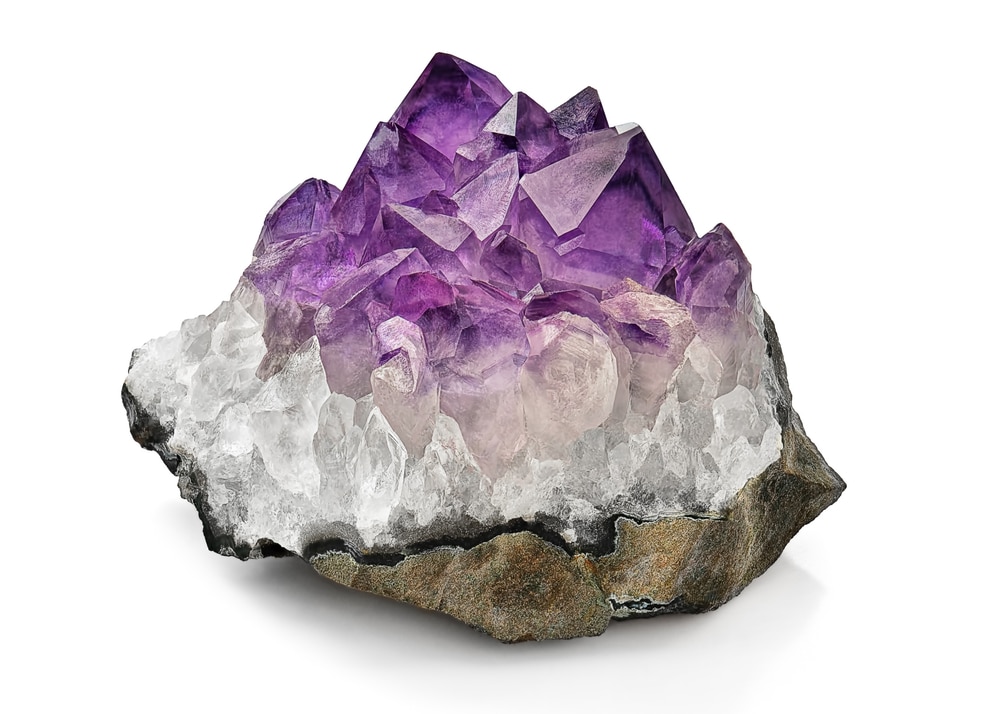
Amethyst, the birthstone for February, is an elegant purple gemstone with a captivating history and symbolism. Let’s delve into its origins, properties, healing powers, and metaphysical benefits it can provide.
Whether you’re searching for the perfect present to honor someone born in February or just want to learn more about this fascinating gemstone, keep reading to explore its unique qualities.
Amethyst History and Origins
Amethyst has been valued for millennia, with its origins dating back to 25,000 B.C. This stunning gemstone has been found in ancient Egyptian jewelry and was also highly prized by the Greeks and Romans.
The name “Amethyst” derives from the Greek word “amethystos,” meaning “not intoxicated,” since this gemstone was believed to protect against drunkenness.
In medieval Europe, Amethyst was associated with royalty and used to adorn crowns, scepters, and other regalia. It also held spiritual significance; bishops would often use it to symbolize their divine connection.
Amethyst Properties and Symbolism
Amethyst is a variety of Quartz that ranges in color from pale lilac to deep purple. The unique color is caused by iron and other trace elements within its crystal structure. This captivating hue has made Amethyst a favorite among gemstone enthusiasts and collectors.
Amethyst is a stone of spirituality and wisdom, often associated with sobriety. For centuries it has been linked to protection, clarity of thought, and divine connection. Additionally, Amethyst has been described as a stone of balance which helps bring balance to one’s emotional, mental, and physical aspects when worn.
Amethyst is often included in meditation practices to foster spiritual growth and an inner understanding. Its calming energy has been said to open the Third Eye and Crown Chakras, creating a stronger connection with spirit.
Amethyst Healing and Metaphysical Properties
Amethyst is believed to possess powerful healing and metaphysical powers that can benefit its wearers in numerous ways. Some of the key advantages associated with Amethyst include:
- Stress Relief: Amethyst’s soothing energy is said to help relieve stress, anxiety and nervous tension. Additionally, it promotes emotional balance which makes navigating difficult situations with a calm demeanor easier.
- Improved Sleep: Amethyst has long been used to aid insomnia and other sleep issues, as it encourages restful sleep and pleasant dreams. Placing an Amethyst crystal under your pillow or wearing Amethyst jewelry while sleeping may help enhance the quality of your night’s rest.
- Enhanced Intuition: Amethyst is believed to enhance one’s intuition and psychic abilities, making it a perfect stone for those seeking to deepen their spiritual connections and discover inner wisdom.
- Addiction Recovery: Long associated with sobriety, Amethyst is said to assist addiction recovery by offering strength, clarity and encouragement during the healing process. It helps balance mind, body and spirit – making it easier to break free of addictive behaviors.
Amethyst, the February birthstone, has a captivating history and powerful symbolism. Its stunning appearance, spiritual connections, and healing properties make it an ideal gift for those born in February or anyone interested in gemstones.
Why not incorporate Amethyst into your daily life to enjoy its many benefits?
March: Aquamarine and Bloodstone Meaning and Symbolism
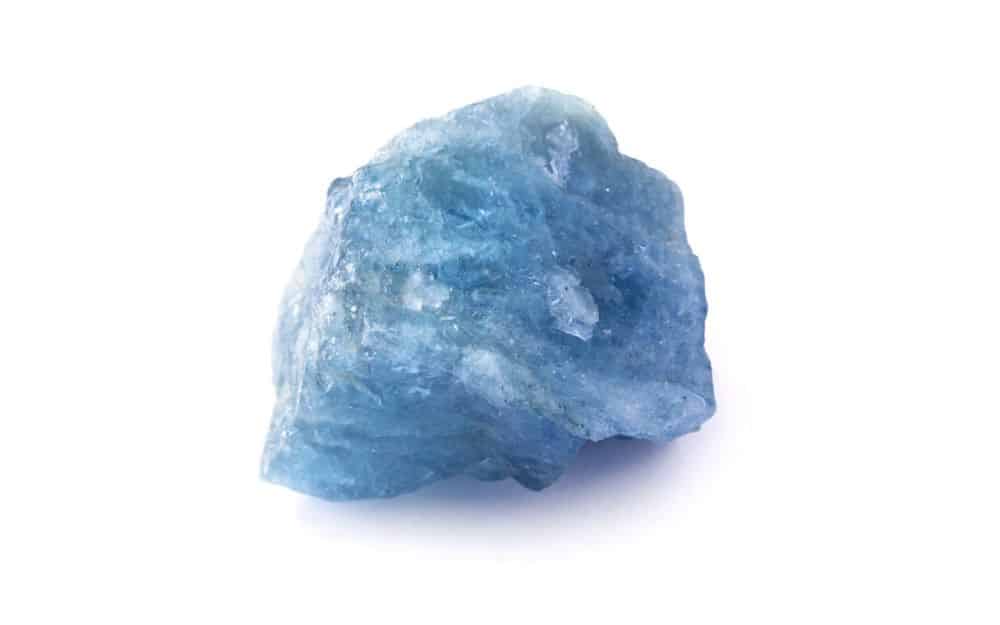
Discover the fascinating history, symbolism, and healing properties of Aquamarine and Bloodstone – birthstones for those born in March. Both stones offer unique characteristics that have been celebrated and cherished for centuries.
Aquamarine and Bloodstone History and Origins
Aquamarine, a striking blue gemstone, derives its name from the Latin words “aqua” (water) and “marina” (sea), symbolizing the tranquil energy of the sea. Historically, this gem was believed to protect sailors during their voyages.
Found mostly in Brazil, Madagascar and Nigeria, Aquamarine belongs to the Beryl family which also includes Emerald and Morganite.
Bloodstone, commonly referred to as Heliotrope, is a dark green gemstone with bright red spots that look like blood. The stone’s name is derived from the Greek words “helios” (sun) and “tropos” (turning), referring to its ancient use in sun dials. Most often found in India, Brazil, and Australia, Bloodstone was prized by ancient Greeks and Romans for its believed ability to heal wounds and detoxify the body.
Aquamarine and Bloodstone Properties and Symbolism
Aquamarine is a symbol of serenity, courage, and communication. Its cool blue hue resonates with the Throat chakra, encouraging individuals to express their thoughts and feelings openly. Furthermore, as a stone of serenity, Aquamarine helps to relax the mind and reduce stress – making it an ideal choice for meditation practices.
Bloodstone, on the other hand, is known for its grounding and purifying effects. It symbolizes strength, endurance and vitality as it helps to balance out the lower chakras – particularly the Root chakra. The red spots on this stone signify life force energy within – making it an effective tool to invigorate both mind and body.
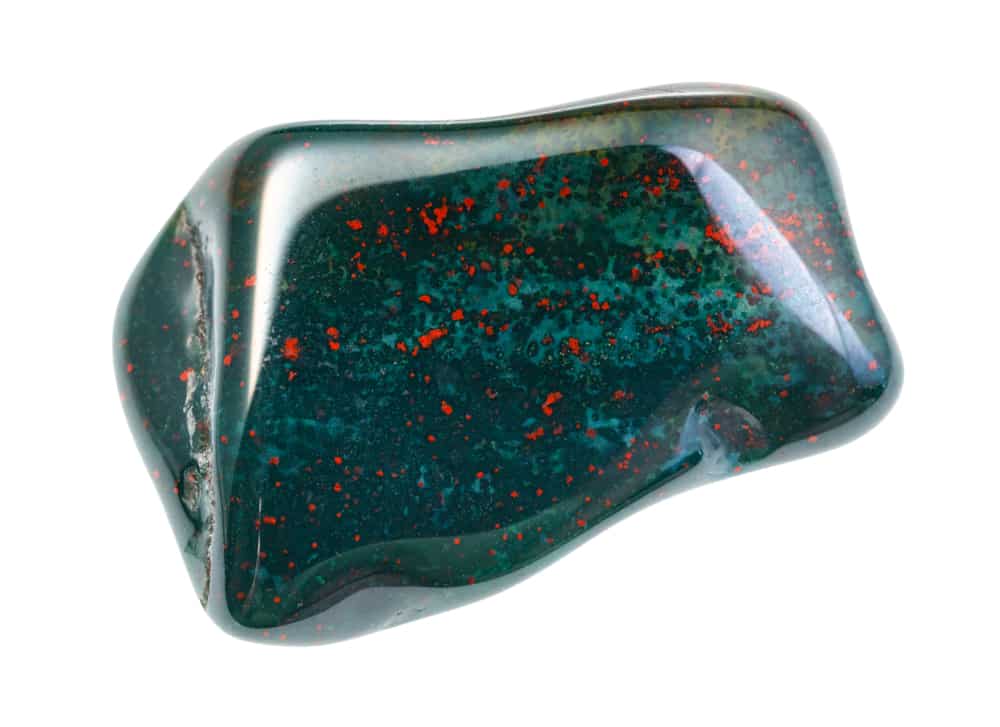
Aquamarine and Bloodstone Healing and Metaphysical Properties
Aquamarine and Bloodstone both possess special healing and metaphysical qualities that can benefit those born in March, as well as those seeking specific energies from these gemstones.
Aquamarine has long been believed to soothe sore throats and support thyroid health due to its connection to the Throat chakra. It also aids in reducing inflammation, allergies, and other immune system disorders. Emotionally speaking, Aquamarine encourages emotional healing by helping individuals release anger and embrace forgiveness.
Bloodstone is renowned for its detoxifying and cleansing properties. It helps improve circulation, purify the blood, support liver and kidney health, reduce inflammation, speed up wound healing, and provide emotional comfort during difficult times. Overall, Bloodstone inspires courage, self-assurance, and resilience – making it an excellent choice to help you face challenges head on.
Aquamarine and Bloodstone are two special birthstones for those born in March, boasting a rich history, symbolism, and healing properties. Tap into their energy by incorporating them into jewelry designs, meditation practices, or everyday life to experience its transformative effects.
April: Diamond Meaning and Symbolism

Diamonds are not only a timeless symbol of love, but also the birthstone for those born in April. As one of the world’s most sought-after gemstones, Diamonds hold great significance in terms of history, symbolism, and healing properties.
So, let’s explore the origins of diamonds, their symbolism, and the metaphysical benefits they possess.
Diamond History and Origins
Diamonds have a captivating history that dates back thousands of years. The earliest recorded discovery of Diamonds occurred in India around 4th century BC, where they were highly prized for their beauty, rarity, and strength.
Ancient Greeks and Romans believed Diamonds to be tears from the gods while others thought they were splinters from falling stars.
Diamonds have long been a symbol of power, wealth and status. The first recorded use of a Diamond engagement ring was in 1477 when Archduke Maximilian of Austria presented Mary of Burgundy with one. Ever since then, this tradition of using Diamonds to signify eternal love has endured.
Diamond Properties and Symbolism
Diamonds possess several remarkable properties which add to their symbolism. As the hardest known natural material, Diamonds score an astounding 10 on the Mohs scale of mineral hardness – symbolizing strength, resilience, longevity. As such, Diamonds make ideal choices for engagement rings or other meaningful jewelry pieces.
Diamonds possess another essential characteristic that sets them apart: their ability to refract light. When light passes through a well-cut diamond, it disperses into a dazzling display of colors, known as fire. This visual effect symbolizes the divine light within, wisdom, and enlightenment.
Diamonds are also associated with various symbolic meanings, such as:
- Purity and Innocence: Diamonds’ clarity and colorless nature represent purity and innocence, making them ideal gifts for newborns and young children.
- Love and Commitment: Diamonds have long been used to symbolize eternal love and an unbreakable connection between two people.
- Strength & Courage: Diamonds symbolize strength and courage to face life’s difficulties head-on.
Diamond Healing and Metaphysical Properties
Diamonds possess many healing and metaphysical properties that have been utilized for centuries.
Some of the key benefits associated with Diamonds include:
- Amplification of Energy: Diamonds are known to amplify the energies of other stones and the wearer’s intentions, making them powerful tools for manifesting desires and reaching success.
- Clarity and Focus: Diamonds can improve mental clarity and focus by clearing away negative thoughts and distractions.
- Emotional Healing: Diamonds have an energetic connection to the emotional body, aiding in the release of emotional baggage while encouraging self-love and forgiveness.
- Spiritual Growth: Diamonds have the power to open one up to higher states of consciousness and divine wisdom, aiding in spiritual development and transformation.
Diamonds have a long and storied history, symbolizing love, purity, strength, and spiritual growth.
As the birthstone for those born in April, they offer healing properties as well as metaphysical ones which can enhance one’s life in various ways.
So whether you’re searching for an everlasting symbol of love or to tap into the powerful energies of the universe – Diamonds are unbeatable choices!
May: Emerald Meaning and Symbolism
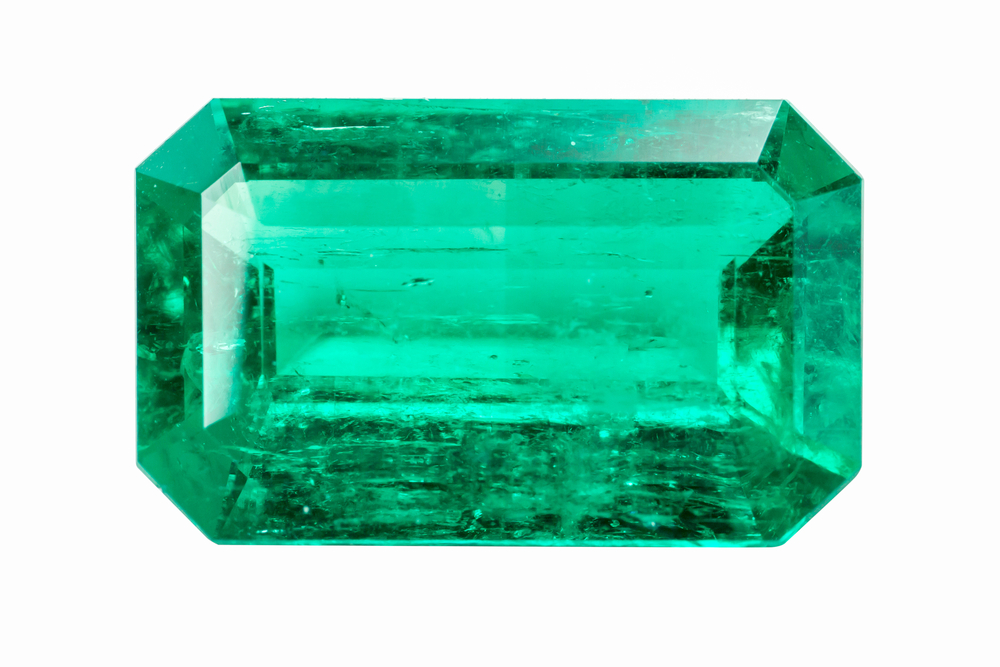
Birthstones have long been a symbol of personal identity, carrying unique properties that are believed to provide wearers with various benefits. In this section, we’ll take an in-depth look into the world of the birthstone of May – the captivating Emerald.
We’ll learn about its history and origins, its symbolic properties as well as any healing or metaphysical benefits associated with this vibrant green gemstone.
Emerald History and Origins
Emeralds have held a special place in the hearts of humanity for millennia, with records of these vibrant green gemstones dating back to ancient Egypt. Cleopatra, the iconic Egyptian queen, had an affinity for Emeralds, often wearing jewelry made out of them.
Likewise, ancient Rome also held this gem in high regard – associating it with Venus and her power of love.
Today, most Emeralds come from Colombia, Brazil and Zambia – although these precious stones can also be found elsewhere around the world. Colombia has long been recognized as a premier producer of high-quality Emeralds due to their lush green hue which attracts collectors and enthusiasts alike.
Emerald Properties and Symbolism
Emeralds are renowned for their stunning green color, which ranges from a pale, almost translucent hue to an intense, deep shade. This vibrant hue is believed to symbolize life, renewal and growth – making Emeralds an ideal choice for those seeking a fresh start or embarking on a new journey.
Emeralds have long been associated with life and growth, but they also symbolize loyalty, wisdom, and love. As such, they have long been used as symbols of affection and commitment – making them an excellent choice for engagement rings and other meaningful jewelry pieces.
The name Emerald comes from the Greek “smaragdos,” or “green stone.” It is actually a variety of Beryl that gets its green hue due to trace amounts of chromium and vanadium.
The stone’s value is determined by its color, clarity, cut, and carat weight, with the most valuable Emeralds exhibiting a vivid, even green hue and a high degree of transparency.
Emerald Healing and Metaphysical Properties
Emeralds have long been associated with a range of healing and metaphysical properties, making them a popular choice for those seeking to benefit from their potential powers.
One of the most renowned benefits of Emeralds is their ability to promote emotional balance and serenity. Emeralds are believed to help soothe the mind, relieving stress and anxiety while increasing mental clarity and focus.
Emeralds are believed to enhance intuition and psychic powers, enabling wearers to access their inner wisdom and gain insight into deeper aspects of their lives. Furthermore, Emeralds promote clarity in communication and self-expression, leading to stronger connections with others as well as an enhanced understanding of oneself and others.
Physically, Emeralds are said to promote overall health and well-being, with special focus on the heart, lungs, and immune system. They aid in detoxification and regeneration processes which may speed up recovery from illness or injury.
Emeralds have a special place among gemstones due to their captivating history, vibrant color, and powerful symbolism.
Whether you’re seeking to tap into their healing and metaphysical properties or simply appreciate their beauty, emeralds are a timeless choice for anyone born in May or looking to add a touch of elegance and meaning to their jewelry collection.
June: Pearl and Alexandrite Meaning and Symbolism
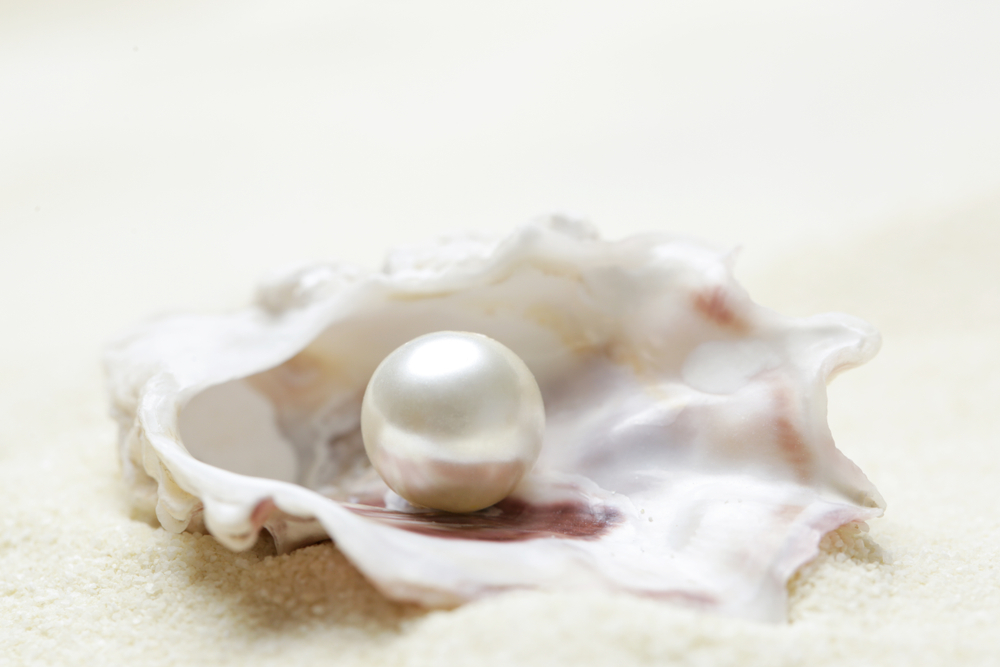
June is a special month for those born under its gentle embrace. It offers two stunning birthstones to choose from – the timeless Pearl and captivating Alexandrite.
Each gem possesses its own fascinating history, unique symbolism, and powerful healing properties. In this section we’ll examine the origins, characteristics, and metaphysical attributes of both gemstones.
Pearl and Alexandrite History and Origins
Pearls are organic gemstones formed when an irritant, such as a grain of sand, enters the shell of a mollusk. Over time, layers of nacre build up around this irritant until you have your shiny Pearl!
For thousands of years throughout history, people have revered Pearls; ancient Romans and Greeks associated them with Venus – goddess of love – while Chinese legends considered them symbols of wisdom.
Alexandrite, on the other hand, is a rare and color-changing variety of Chrysoberyl. Discovered in 1830 in Russia’s Ural Mountains, this captivating gemstone was named in honor of Tsar Alexander II due to its greenish-red color shift that closely resembles Russia’s national colors.
No wonder why it remains so captivating today.
Pearl and Alexandrite Properties and Symbolism
Pearls have long been associated with purity, integrity, and loyalty. Their gentle glow symbolizes the inner light and hidden wisdom within an individual, making them popular in wedding ceremonies to symbolize love between partners as well as transformation and personal growth due to their unique formation process.
Alexandrite is a symbol of duality, representing balance, change and adaptability. Its color transformation mirrors life’s ever-evolving nature while encouraging its wearer to embrace change with courage and grace. Furthermore, Alexandrite has been linked with intuition and creativity – believed to stimulate imagination and spark original thought.
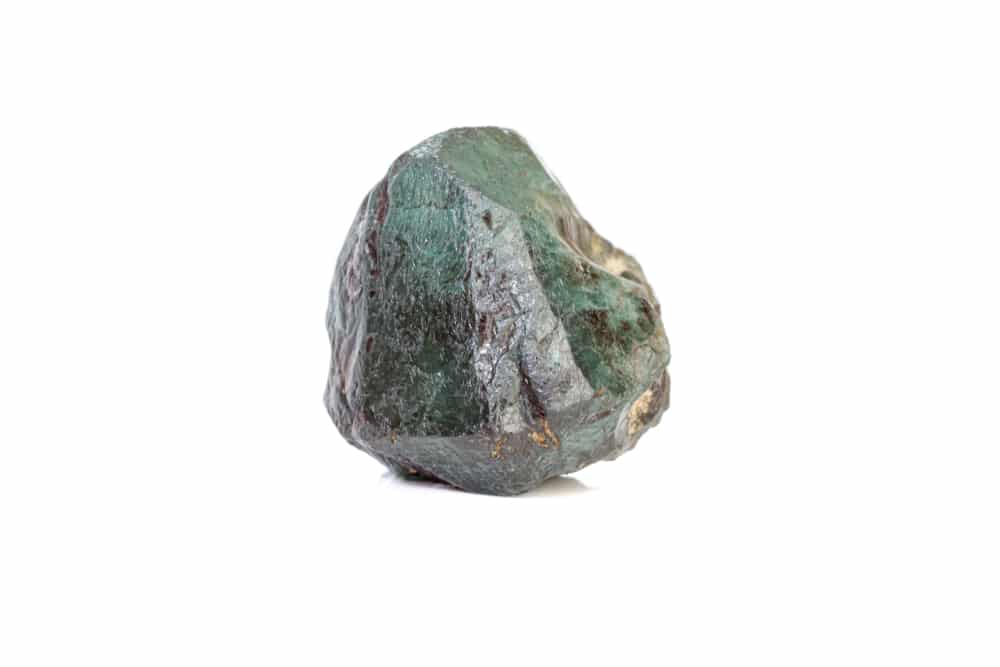
Pearl or Alexandrite Healing and Metaphysical Properties
Pearl and Alexandrite not only possess an alluring aesthetic, but they also possess powerful healing and metaphysical powers.
Pearls have a calming, relaxing effect on the emotions, helping to reduce stress and anxiety. They encourage emotional healing, promote self-acceptance, and instil an inner calm. Furthermore, Pearls act as nurturing stones which strengthen friendship bonds and foster loving relationships.
Alexandrite, with its changing colors, is considered a symbol of transformation and rebirth. It can help individuals adjust to new circumstances and overcome obstacles with its metaphysical properties such as increasing intuition, increasing self-assurance, and attracting good fortune.
Furthermore, Alexandrite has an emotional calming effect on those wearing it; helping to maintain emotional equilibrium and bring harmony into their life.
June’s birthstones – Pearl and Alexandrite – are as unique and captivating as the individuals born in this month. Both stones boast a captivating history, captivating symbolism, and powerful healing properties that make them ideal choices for those celebrating their June birthday or simply wanting to harness the powerful energies these stones embody.
July: Ruby Meaning and Symbolism
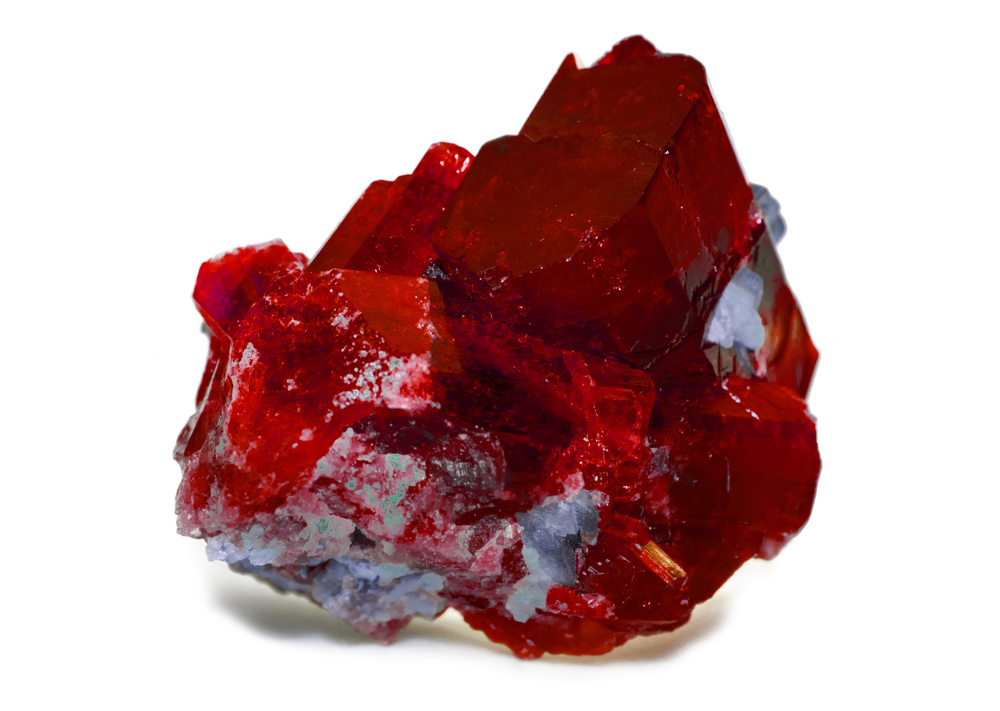
Ruby, the alluring red gemstone, has a captivating history and symbolic meaning that make it an ideal birthstone for those born in July.
For centuries, Rubies have been celebrated and cherished for their healing properties and captivating charm.
In this section we’ll explore the captivating history, symbolism, and metaphysical properties of this stunning gemstone.
Ruby History and Origins
Rubies have been prized for their striking beauty since ancient times, with a history spanning over 2,000 years. This gemstone was highly valued by various cultures such as the Greeks, Romans and Egyptians alike.
The primary source of rubies is the Mogok region in Myanmar (formerly Burma), where they’ve been mined for centuries. Other notable sources include Thailand, Cambodia, Madagascar and Sri Lanka.
The name “Ruby” derives from the Latin word for red, signifying its deep red hue. For centuries, Rubies have been associated with power, passion and protection – often worn by kings, queens and warriors alike. In Hindu culture, Rubies were believed to grant invincibility to those who embedded them into their flesh.
Ruby Properties and Symbolism
The Ruby is a variety of the mineral corundum, which also includes Sapphires. Their unique red color is caused by traces of chromium. The red hues can range in intensity from light pinkish-red to deep and vibrant reds; the most sought-after being “pigeon’s blood,” a vibrant slightly purplish red.
Rubies symbolize love, passion and energy – making them a popular choice for engagement rings and romantic gifts. Additionally, Rubies have long been associated with courage, strength and protection; in ancient times they were believed to ward off evil spirits and protect those wearing them from harm.
Astrologically, Rubies are associated with Cancer – ruled by the Moon – and believed to bring balance and mental clarity to those under this sign.
Furthermore, Rubies can be linked to “chi,” or life force energy in Chinese philosophy, making them powerful symbols of vitality and perseverance.
Ruby Healing and Metaphysical Properties
Rubies possess extraordinary healing and metaphysical qualities that have been long appreciated by crystal enthusiasts.
Here are some of the key advantages attributed to this captivating gemstone:
- Emotional Healing: Rubies have long been believed to enhance emotional stability, relieving feelings of anxiety, stress and depression. By encouraging self-love and confidence in oneself, Rubies can assist individuals in breaking through emotional barriers and cultivating healthy relationships.
- Physical Vitality: Rubys are said to stimulate the circulatory system and raise energy levels, combatting fatigue and promoting physical vitality.
- Mental Clarity: Rubies are believed to sharpen the mind and improve concentration, helping with problem solving and decision making. Furthermore, a Ruby’s metaphysical properties stimulate creativity and motivate us.
- Protection: Wearing or carrying a Ruby is believed to provide protection from negative energies and psychic attacks, shielding its wearer from harm and instilling an atmosphere of safety and security.
The Ruby, with its intriguing history and symbolism, is an enchanting gemstone that holds great significance for those born in July. Its healing and metaphysical properties make it a valuable companion in daily life; encouraging emotional well-being, mental clarity, and physical vitality.
August: Sardonyx and Peridot Meaning and Symbolism
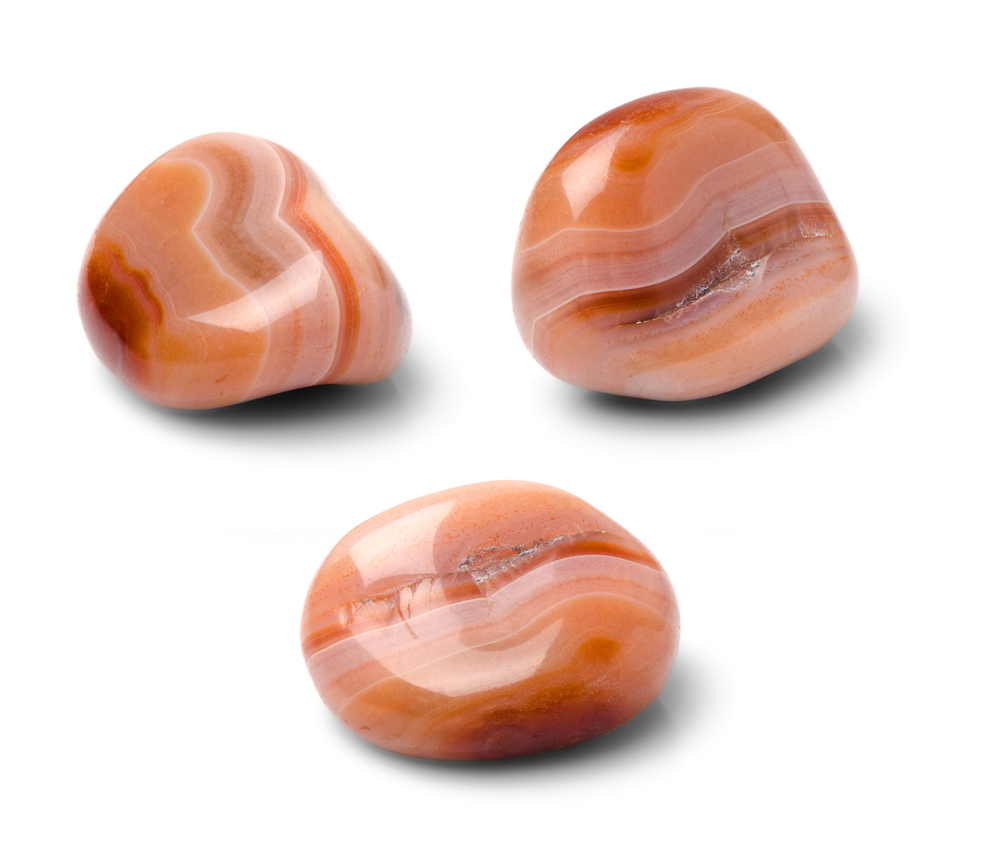
August’s birthstones, Sardonyx and Peridot, have fascinating histories and properties. Let’s investigate their origins, symbolism, as well as any purported healing or metaphysical benefits.
Sardonyx and Peridot History and Origins
Sardonyx, a variety of Onyx, has been valued for centuries for its vibrant banded patterns in red, white and brown hues.
The name itself derives from the Greek words “sard” (meaning red) and “onyx” (meaning veined gem.) Since ancient times this stone has been used to carve cameos, intaglios and other decorative items; it was especially popular during Ancient Rome where soldiers would wear it as a talisman for protection and courage during battle.
Peridot, on the other hand, is an olivine mineral known for its vibrant green hue. The gem’s name likely derives from Arabic “faridat,” meaning “gem.” For thousands of years Peridot was revered by ancient Egyptians who believed it could protect its wearer from evil spirits and nightmares. Mines have been discovered on Zabargad island in the Red Sea dating back at least 300 BCE.
Sardonyx and Peridot Properties and Symbolism
Both Sardonyx and Peridot possess unique properties and symbolism. Sardonyx is a stone of strength, protection, and grounding. Its banded pattern represents the balance between different aspects of life, such as work and personal relationships. Sardonyx is also believed to enhance willpower, self-discipline, and determination, making it an ideal stone for those seeking to improve their focus and achieve their goals.
Peridot’s vibrant green color symbolizes growth, renewal, and abundance. The gem is often associated with light, warmth, and the sun’s energy, as well as with love, happiness, and emotional well-being. As a result, Peridot is considered a powerful talisman for attracting positive energy and fostering harmonious relationships.
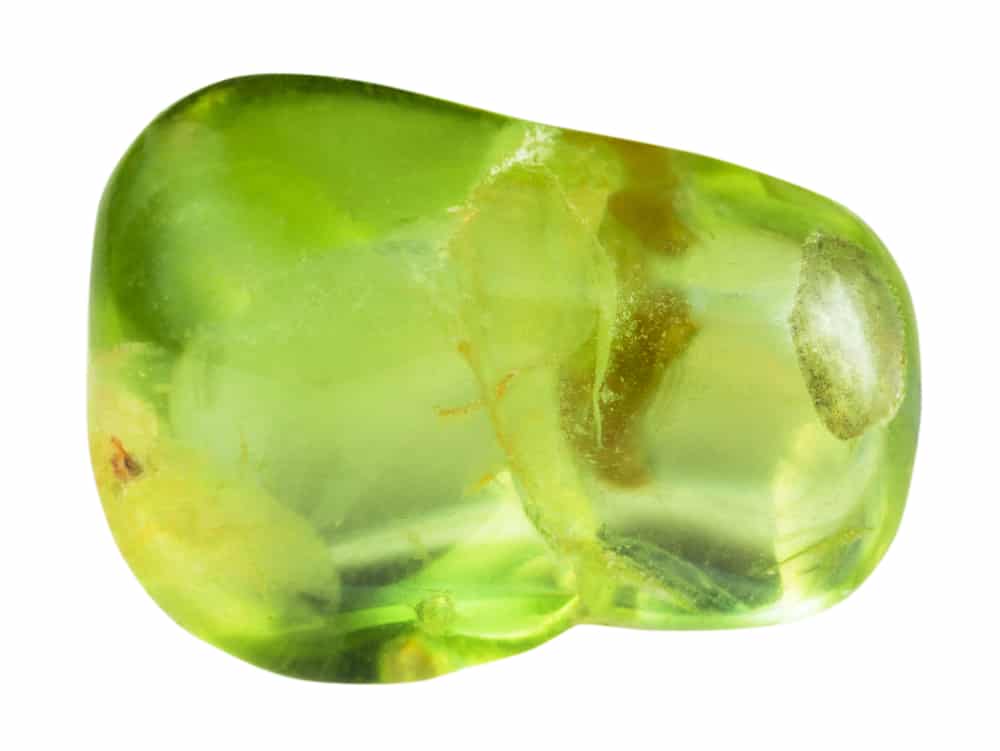
Sardonyx and Peridot Healing and Metaphysical Properties
Sardonyx and Peridot have long been attributed with various healing and metaphysical properties.
Sardonyx is said to promote emotional stability and alleviate feelings of depression, anxiety, and stress. It’s also believed to strengthen the immune system, improve metabolism, and support bone and muscle health.
Peridot also has long been recognized for its healing powers. It helps to balance energy centers or chakras within the body – especially the Heart chakra – encouraging emotional healing and self-love. Furthermore, Peridot aids digestion, improves sleep quality, supports liver and gallbladder health.
August’s birthstones Sardonyx and Peridot are prized for their unique histories, symbolism, and purported healing properties. Whether you’re drawn to Sardonyx’s protective qualities and grounding energy or Peridot’s vibrant representation of growth and renewal, these stunning gems provide a meaningful way to connect with your birth month and promote well-being.
September: Sapphire Meaning and Symbolism
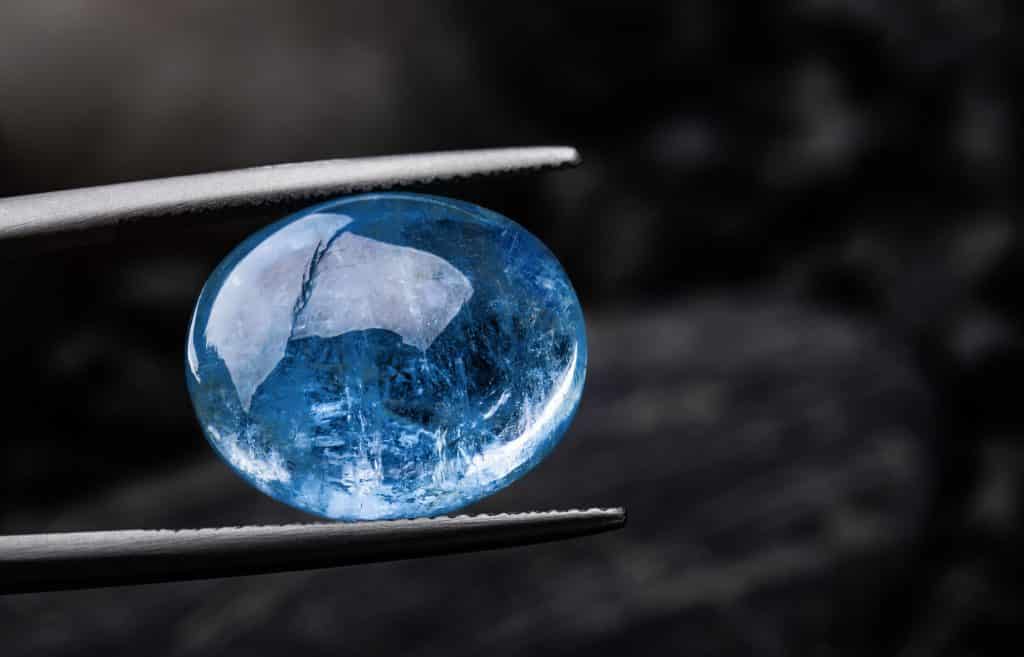
Sapphires have long captured the hearts of people with their deep blue hues and captivating sparkle. As the birthstone for September, Sapphires hold special meaning, symbolism, and healing properties for those born in this month.
In this section we’ll delve into the history and origins of Sapphires, uncover their symbolic associations, as well as explore some of their healing and metaphysical properties.
Sapphire History and Origins
Sapphires have a captivating history that dates back thousands of years. People discovered these stunning gemstones in ancient civilizations around the world, such as India, Sri Lanka, and Myanmar.
In ancient Greece and Rome, rulers and nobility would wear Sapphires as symbols of wealth and power – believing it could shield them from harm or envy.
Sapphires have long been valued by clergy and royalty for their purported ability to promote divine wisdom and spiritual awakening. The British Crown Jewels, famous for their exquisite collection of precious stones, feature several prominent Sapphires, further highlighting the gemstone’s historical significance.
Sapphire Properties and Symbolism
Sapphires have long been prized for their deep blue color, which symbolizes wisdom, loyalty and nobility. These attributes have made Sapphires one of the world’s most revered gemstones.
The word “sapphire” originates from the Latin word “sapphirus” and the Greek word “sappheiros,” both meaning “blue.”
Sapphires not only possess an eye-catching beauty, but they also carry significant symbolic meanings.
For instance, they represent faithfulness and sincerity in relationships – making them popular engagement rings choices. Sapphires also symbolize spiritual growth, inner peace, and the pursuit of truth; many believe wearing a Sapphire will enhance intuition and promote mental clarity.
Sapphire Healing and Metaphysical Properties
Sapphires possess a range of healing and metaphysical benefits for those who wear or meditate with them. Some of the most notable healing properties include:
- Emotional Healing: Sapphires are believed to help alleviate feelings of anxiety, depression and stress by balancing emotions and providing a sense of inner calm and stability.
- Mental Clarity: Sapphires can improve mental focus, concentration and memory retention. Furthermore, they promote clear thinking and decision-making, making them ideal for individuals looking to hone their cognitive skills.
- Physical Healing: Some believe that Sapphires possess physical healing properties, such as reducing inflammation, improving blood circulation and promoting overall wellness.
- Spiritual Growth: Sapphires are said to encourage spiritual development and enhance psychic abilities. They help individuals connect with their higher selves, access deeper levels of wisdom and insight.
- Chakra Balancing: Sapphires are connected to the throat and Third Eye chakras, helping clear energy blocks, enhance communication abilities, and sharpen intuition.
In conclusion, Sapphires possess a great deal of symbolism and healing properties that make them an ideal choice for those born in September.
Their history and origins underscore their significance across various cultures, while their symbolism speaks to the gemstone’s ability to foster loyalty, wisdom, and spiritual growth. Furthermore, Sapphires’ healing properties offer emotional, mental, physical, and spiritual benefits – making them truly powerful yet versatile gemstones.
October: Opal and Tourmaline Meaning and Symbolism
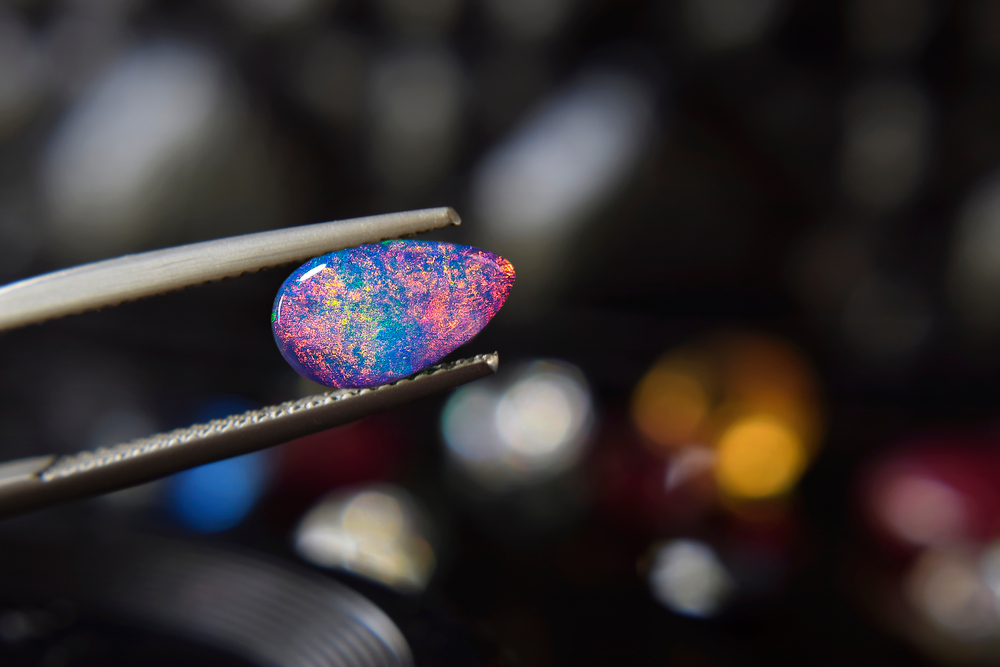
October’s birthstones, Opal and Tourmaline, offer a stunning combination of beauty and powerful symbolism for those born in this month. Both stones exhibit an array of colors which makes them highly popular gemstones.
In this section we will examine the history and origins of Opal and Tourmaline, discover their symbolic meanings, as well as explore their healing and metaphysical properties.
Opal and Tourmaline History and Origins
Opals have an illustrious and long history that dates back millennia. The name “opal” comes from the Latin word “opalus,” which means “precious stone.” Ancient Romans believed Opals to be symbols of hope and purity, while ancient Greeks associated them with prophetic powers and protection from illness.
Opal deposits have been discovered worldwide, from Australia to Ethiopia and Mexico. Australia in particular has become synonymous with Opals due to its production of over 90% of the world’s supply.
Tourmaline gets its name from the Sinhalese word for “mixed gems,” “turmali.” This description accurately captures the stone’s varied colors and potential confusion with other gemstones. Tourmaline has been prized for centuries, with some of the earliest records dating back to Brazil’s 16th century.
Tourmaline deposits can be found around the world, such as Brazil, Afghanistan, Madagascar and even in the United States. Their unique range of colors is due to their chemical composition which varies based on where it was discovered.
Opal and Tourmaline Properties and Symbolism
Opals are renowned for their stunning display of colors, known as “opalescence.” This phenomenon occurs when light diffracts within microscopic silica spheres within the stone, creating an captivating display of shifting hues. Opals symbolize creativity, inspiration and self-expression; they’re also thought to foster loyalty, faithfulness and emotional balance.
Tourmaline comes in an array of colors, such as pink, green, blue and black. Each hue conveys specific symbolism and properties; Pink Tourmaline symbolizes love and compassion while Green Tourmaline denotes abundance and vitality. Tourmaline has long been believed to promote balance, protection and grounding properties.
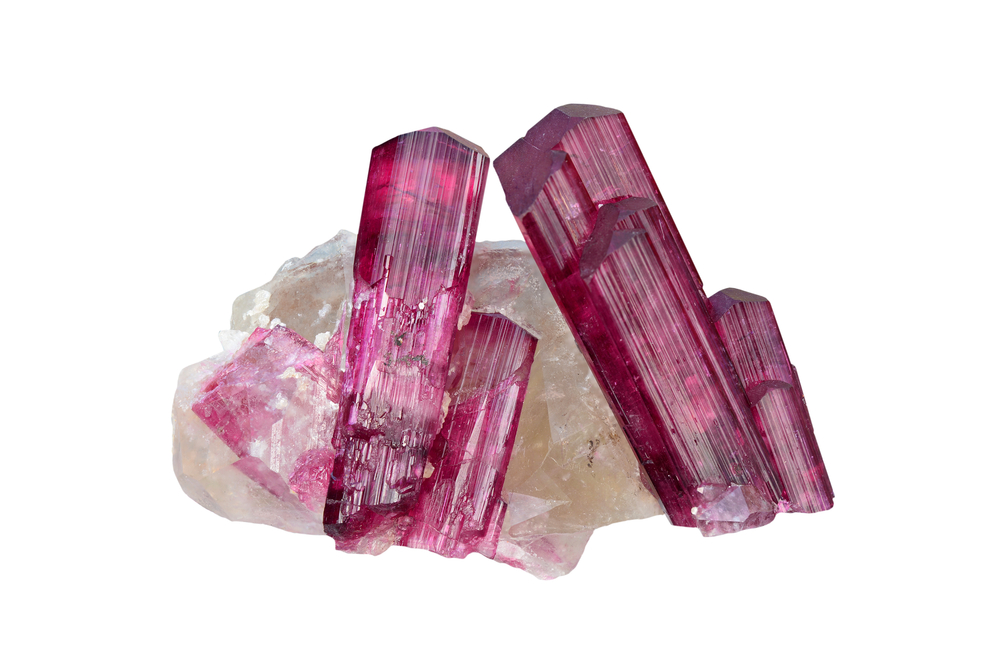
Opal and Tourmaline Healing and Metaphysical Properties
Opals possess several healing and metaphysical properties that can be beneficial to those who wear or meditate with them:
- Emotional Healing: Opals help release negative emotions, promote emotional balance, and provide a sense of inner peace and harmony.
- Creativity and Inspiration: Opals are believed to foster creativity, inspiration, and imagination – making them perfect for artists and writers.
- Intuition and Clairvoyance: Opals can enhance intuition and psychic abilities, providing individuals with deeper insights and spiritual wisdom.
- Chakra Balancing: Opals can help restore equilibrium to your chakras, encouraging healthy energy flow and overall well-being.
Tourmaline offers a wealth of healing and metaphysical properties:
- Protection and Grounding: Tourmaline is known for its protective qualities, shielding against negative energies while providing a sense of groundedness and security.
- Emotional Healing: Tourmaline can help balance emotions, reduce stress and promote self-love and acceptance.
- Physical Healing: Some believe Tourmaline supports physical healing by strengthening the immune system, improving circulation and encouraging detoxification.
- Chakra Balancing: Tourmaline comes in various colors and is associated with various chakras, making it an effective tool for aligning and balancing the body’s energy centers.
Both Opal and tourmaline serve as powerful symbols of hope, creativity, and balance for those born in October. Their fascinating histories and origins highlight their significance across different cultures and time periods.
Each gemstone’s distinctive properties and symbolism – from opalescence to Tourmaline’s vibrant color palette – makes them truly unique and valuable stones.
Opal and Tourmaline possess powerful healing and metaphysical properties, such as emotional healing, enhanced intuition and chakra balancing. By wearing or working with these captivating gemstones, those born in October can tap into their powerful energy and utilize their inherent qualities for personal growth and well-being.
November: Topaz and Citrine Meaning and Symbolism
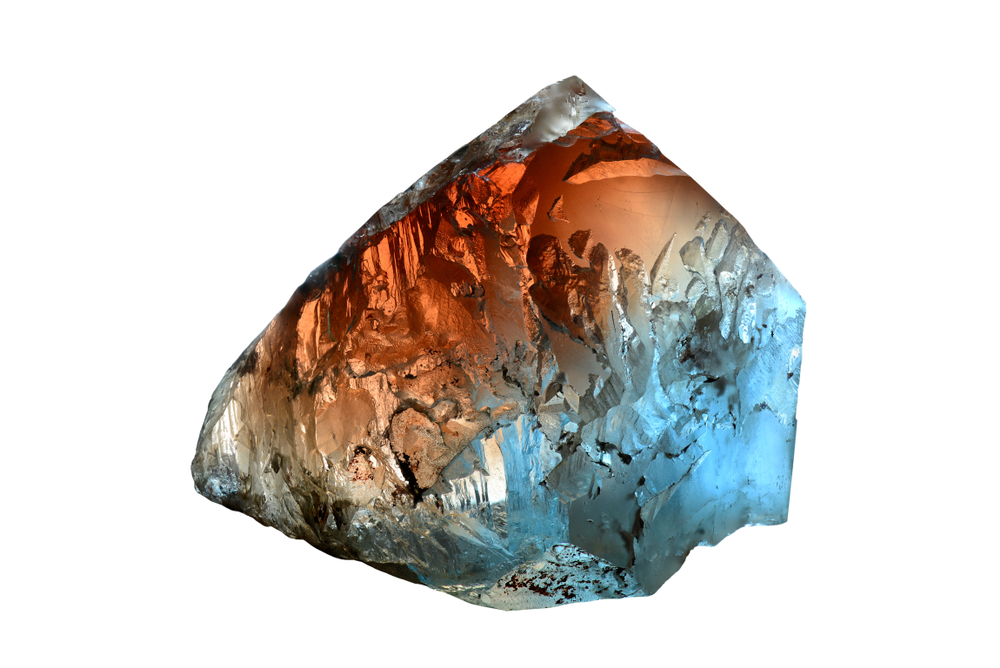
November’s birthstones, Topaz and Citrine, hold a rich cultural history, symbolic meaning, and powerful healing properties.
In this section we’ll delve into the origins, symbolism, and metaphysical properties of these captivating gemstones to understand their popularity across cultures.
Topaz and Citrine History and Origins
Topaz, a stunning gemstone available in many hues, has its roots in ancient civilizations. The name “Topaz” is believed to have come from either the Sanskrit word “tapas,” meaning fire, or from the Greek island of Topazios where it was once believed to be found; however, further investigation revealed this island produced Peridot instead.
Ancient Greeks and Romans valued Topaz for its purported strength-boosting abilities and ability to dispel anger; during the Middle Ages however, people believed it could break spells and heal ailments.
Citrine, on the other hand, is an exquisite yellow-to-orange variety of Quartz. Its name derives from Latin “citrina,” meaning lemon, due to its vibrant hue.
Citrine has been used in jewelry since antiquity; its first documented use dating back to Greece during the Hellenistic period. Throughout history, Citrine has been associated with wealth, abundance and prosperity; earning it the nickname “The Merchant’s Stone.”
Topaz and Citrine Properties and Symbolism
Topaz’s properties and symbolism differ depending on its color. The imperial Topaz, with a golden-orange hue, is the most sought-after Topaz and symbolizes wealth, power, protection; Blue Topaz stands for wisdom, communication, and honesty; Pink Topaz symbolizes hope, love, and affection.
Citrine has long been associated with the sun, symbolizing warmth, light, and energy. This vibrant gemstone is said to promote creativity, abundance, and happiness – making it a great choice for manifesting personal goals and desires. Furthermore, its warm solar energy is said to dispel negativity and attract positive influences.
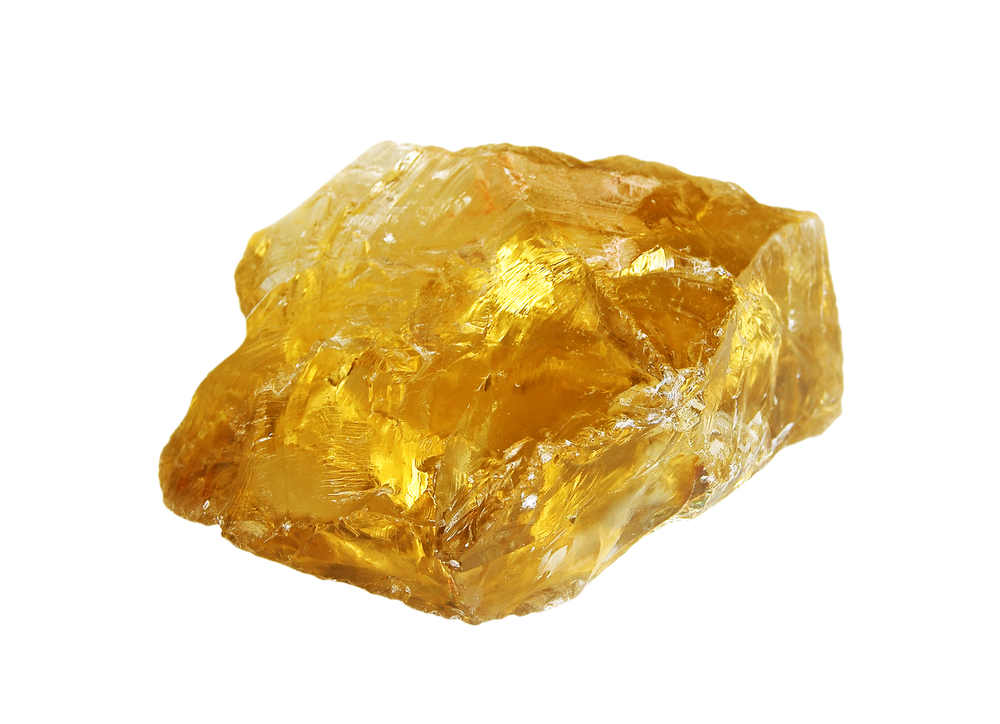
Topaz or Citrine Healing and Metaphysical Properties
Topaz and Citrine possess special healing and metaphysical qualities that have made them popular in crystal healing circles.
Topaz is believed to have an emotional balancing effect, helping reduce stress, anxiety, and anger. Blue Topaz, in particular, is associated with the Throat chakra, promoting honest communication and self-expression.
Citrine, a powerful manifestation stone, is believed to energize the Solar Plexus chakra and boost self-confidence, motivation, and personal power. It also stimulates the Crown chakra for spiritual growth and connection with higher selves.
Many crystal healers use Citrine for depression or anxiety relief since it carries the uplifted energy of the sun.
In conclusion, November’s birthstones, Topaz and Citrine, offer a rich heritage and captivating symbolism that makes them special gifts for those born in this month. Their reputed healing properties as well as vibrant colors continue to capture people’s hearts and minds around the world.
December: Tanzanite, Zircon, and Turquoise Meanings and Symbolism

December babies have the unique advantage of choosing from three birthstones: Tanzanite, Zircon and Turquoise.
Each gemstone carries its own history, symbolism and set of healing properties that make them truly special gifts for anyone born during the last month of the year.
Now let’s explore the fascinating origins and meanings behind each December birthstone, emphasizing their special characteristics and significance.
Tanzanite, Zircon, and Turquoise History and Origins
Tanzanite is a relatively recent gemstone, discovered in 1967 near Mount Kilimanjaro in Tanzania – which remains its only known source. Due to its striking blue-violet hue and limited supply, this gem has become highly sought-after and valuable.
Zircon is one of the oldest minerals on Earth, having existed for over 4.4 billion years. While this gemstone can be found worldwide, it’s most commonly mined from Sri Lanka, Cambodia and Australia. Zircon comes in an array of colors but the vibrant blue variety is the most popular option when selecting birthstone jewelry for December.
Turquoise has been prized for millennia, with roots in ancient Egypt, Persia and China. This captivating blue-green stone is currently mined primarily in the United States, Iran and China. Its name is derived from the French word for “Turkish,” as it was originally brought to Europe from Turkey.
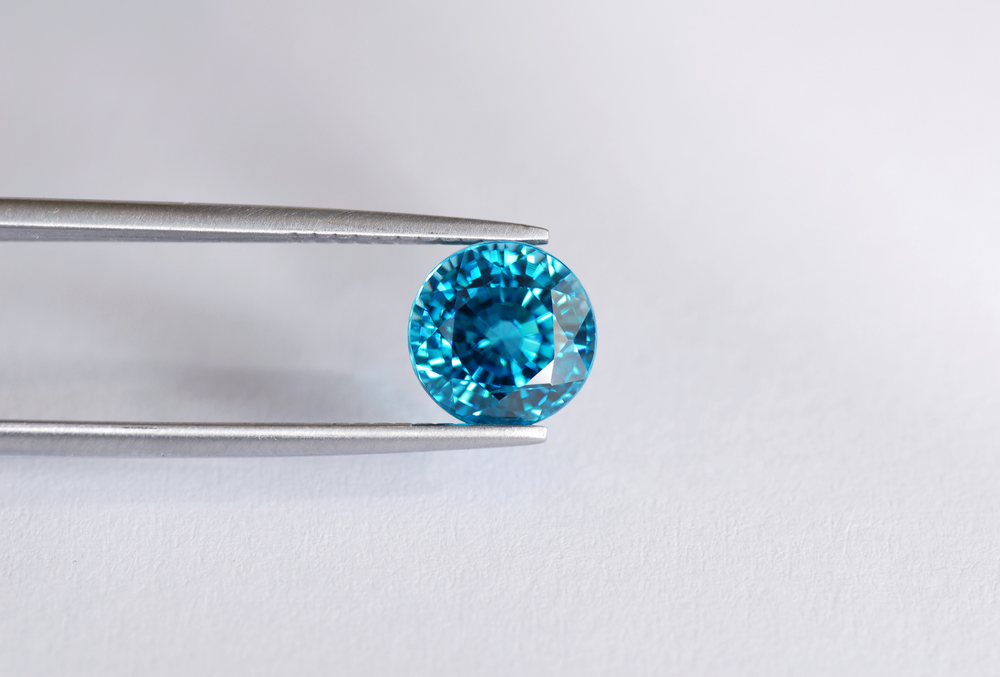
Tanzanite, Zircon, and Turquoise Properties and Symbolism
Tanzanite is believed to symbolize spiritual growth, transformation and self-discovery. Its vibrant blue-violet color awakens intuition and encourages people to understand their true purpose more fully. Additionally, this gemstone has protective properties; helping dispel negative energies and shielding against harm.
Blue Zircon is a symbol of wisdom, prosperity and inner peace. Its vibrant hue can inspire confidence and drive to achieve personal objectives. As a reminder of purity and innocence, Zircons are often gifted as tokens to mark new beginnings – perfect for engagements or milestone anniversaries!
Turquoise is revered as a master healer and stone of communication, embodying the energies of wisdom, serenity, and protection. Its soothing blue-green hue is said to promote emotional balance and mental clarity, enabling wearers to express their thoughts and feelings more comfortably.
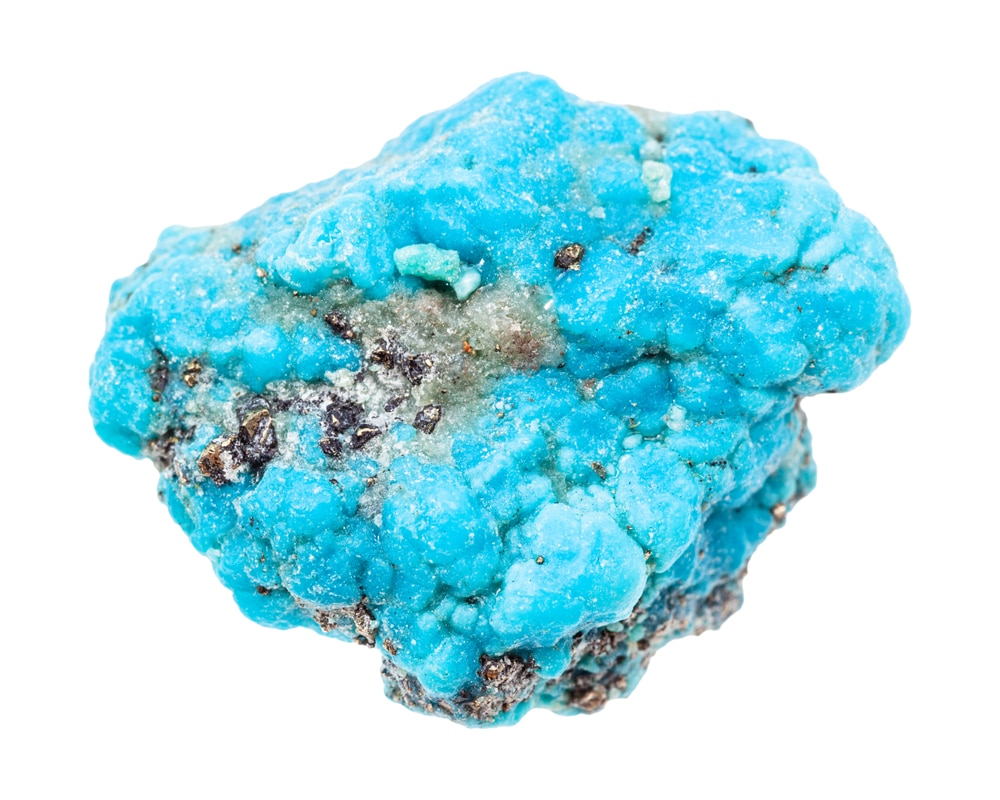
Tanzanite, Zircon, and Turquoise Healing and Metaphysical Properties
Tanzanite, Zircon, and Turquoise are highly valued for their symbolic meaning as well as for their purported healing and metaphysical properties.
Tanzanite is believed to enhance psychic abilities, facilitate meditation, and foster spiritual growth. It helps alleviate stress and anxiety while inducing a sense of serenity and wellbeing.
Zircon’s healing properties are believed to include boosting the immune system, increasing vitality and supporting natural healing processes within the body. Its energy also attracts love and happiness as well as aiding in grieving or loss.
Turquoise has long been revered as a powerful healing stone, with claims of strengthening the body, relieving mind stress, and stimulating spiritual growth. It protects against negative energies while increasing resilience during times of stress or emotional upheaval. Furthermore,Turquoise aids communication by clearing away any obstructions to self-expression.
In summary, Tanzanite, Zircon, and Turquoise are three captivating December birthstones, each with a rich history and unique symbolism.
Choosing and Caring for Birthstone Jewelry: Tips and Tricks
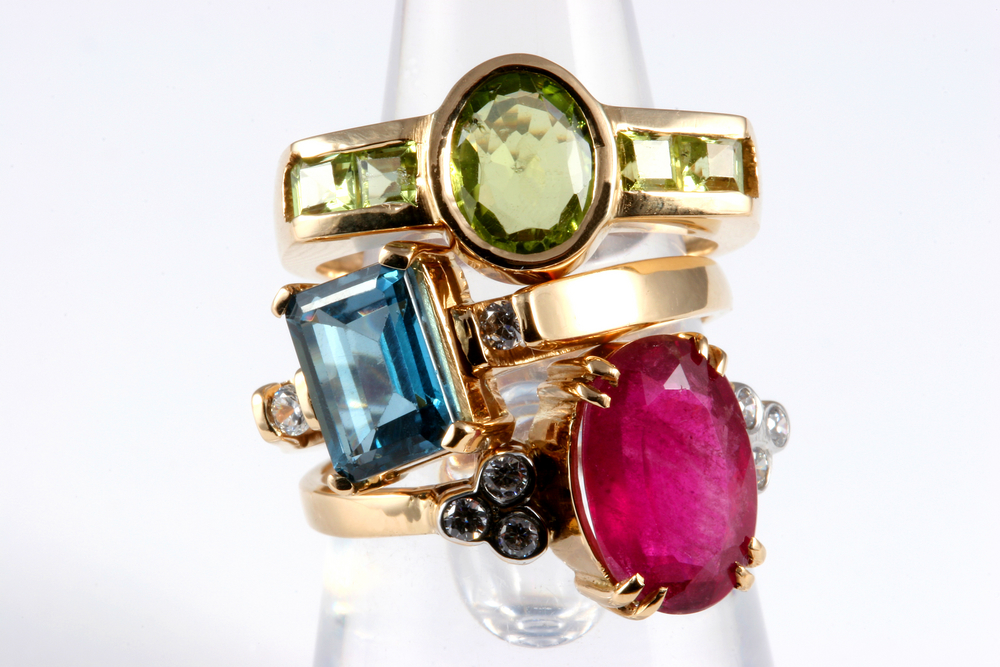
Birthstone jewelry holds a special meaning for many, as it symbolizes their connection to their birth month and adds a personal touch to their style.
Choosing and caring for birthstone jewelry can be a rewarding experience if you know what to look for and how to maintain its beauty.
In this section, we’ll share tips on selecting the ideal birthstone jewelry as well as helpful care and maintenance advice.
How to Choose the Perfect Birthstone Jewelry
When selecting birthstone jewelry, it is essential to take into account factors like gemstone quality, personal preferences and budget.
Here are some tips that will help guide you through this process:
- Assessing Gemstone Quality: When selecting birthstone jewelry, quality should be taken into consideration. A high-quality gemstone will have a vibrant and even color with minimal inclusions or blemishes and an expertly crafted cut that showcases its brilliance. Look for birthstone jewelry using natural untreated gemstones as these tend to be more valuable and desirable. Be aware that some gemstones such as Emeralds and Rubies may have been treated in order to enhance their appearance. If a gemstone has been treated, it should be disclosed by the seller.
- Balancing Personal Preferences and Meaning: When selecting birthstone jewelry, take into account the wearer’s personal style and preferences. Select a piece that incorporates the birthstone in a design that suits the wearer’s style, whether it’s a classic solitaire ring, a pendant necklace, or a pair of earrings. Be mindful of how often they’ll be wearing it too; some gemstones such as Diamonds, Rubies and Sapphires may withstand daily wear and tear better than others like Opals and Pearls can.
- Budget Considerations for Birthstone Jewelry: Budget is an important factor when shopping for birthstone jewelry. Determine a price range before beginning your search to avoid overspending. Prices can vary significantly based on gemstone quality, metal type and design complexity; however you can still find beautiful pieces within your budget by prioritizing factors like gemstone size or metal type.
Birthstone Jewelry Care and Maintenance
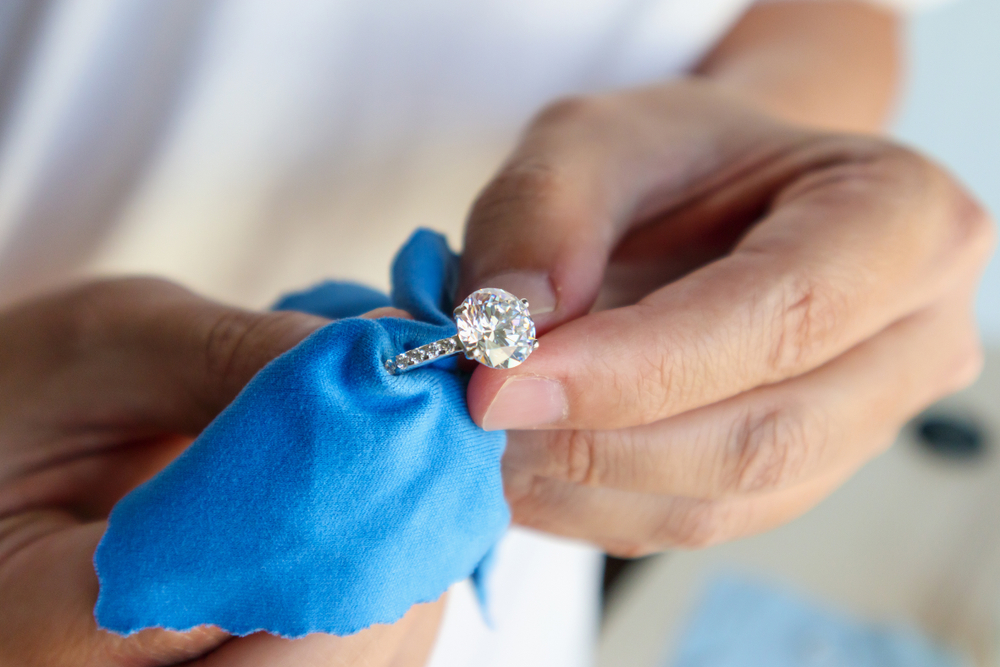
Proper care and maintenance of your birthstone jewelry can extend its life and keep it looking stunning for years to come.
Here are some helpful tips on storage, cleaning, and repair:
- Proper Storage Techniques:
- Store your birthstone jewelry in a dry, clean place away from direct sunlight which can fade some gemstones.
- Utilize a fabric-lined jewelry box with separate compartments to prevent pieces from scratching or tangling.
- Alternatively, keep each piece separately in an individual soft pouch if you don’t have access to a jewelry box.
- Avoid exposing your birthstone jewelry to chemicals such as cleaning products, perfumes or chlorine in swimming pools, as these can damage both the gemstone and metal setting.
- Cleaning and Maintaining Your Gemstones:
- Regularly clean your birthstone jewelry to remove dirt, oils, and residue that can dull its shine.
- The type of cleaning method depends on the gem type and hardness. For most gemstones, use a soft lint-free cloth to wipe away dirt and oils. Harder stones such as Diamonds, Sapphires, and Rubies can be cleaned using warm water mixed with mild dish soap.
- Lightly scrub the jewelry with a toothbrush then rinse thoroughly and pat dry. Be gentle when cleaning softer gemstones such as Opals, Pearls or Turquoise, as they can easily get scratched or damaged. Use a damp cloth to wipe them clean; avoid using chemicals or soaking in water.
- Always consult a professional jeweler if unsure about the best cleaning method for your particular gemstone.
- Repair and Restoration Tips:
- Check your birthstone jewelry regularly for signs of damage or wear, such as loose gemstones, bent prongs, or worn clasps. Addressing these issues early can prevent more serious problems and the potential loss of your valuable gemstones.
- If your birthstone jewelry requires repair or restoration, seek the help of a professional jeweler who has experience working with the specific type of gemstone and metal in your piece. This will ensure that your jewelry is repaired correctly and safely.
- Avoid attempting to fix your jewelry at home, as this can cause further damage.
In conclusion, selecting and caring for birthstone jewelry requires assessing its quality, taking into account personal preferences and significance, as well as considering your budget.
With proper storage, cleaning, and repair techniques in place, your jewelry will remain a treasured possession for years to come. By following the tips outlined in this section, you can confidently select the ideal birthstone jewelry while keeping it looking its best.
Unique Birthstone Gifting Ideas for Every Occasion
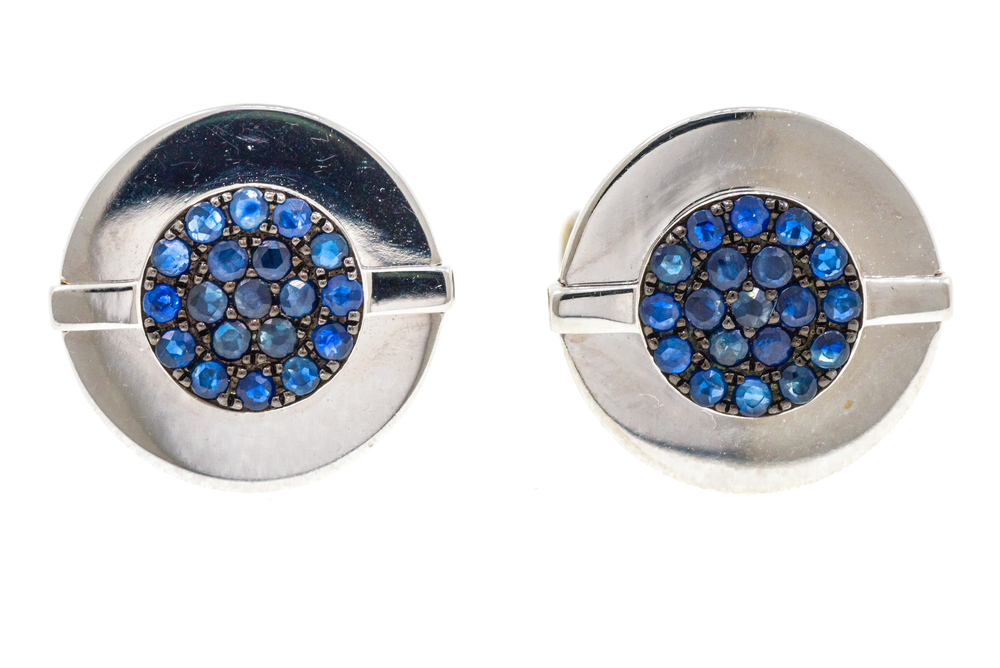
Birthstone gifts are a thoughtful way to commemorate life’s special moments, adding a personal touch that makes each piece of jewelry unique for its recipient.
Let’s examine various birthstone jewelry gift options and offer guidance in choosing the ideal present to mark these momentous occasions.
Birthstone Jewelry Gift Options
There are countless ways to incorporate birthstones into jewelry designs, making it easy to find the perfect gift that suits the recipient’s taste and style. Here are some popular birthstone jewelry options to consider:
- Birthstone Rings for All Styles: Rings have always been a timeless gift option, and adding a birthstone adds an extra special touch. Choose from classic solitaire designs featuring your birthstone or opt for something more contemporary with multiple stones or mixed metals. Stackable birthstone rings are another popular option, allowing recipients to wear multiple rings representing their loved ones’ birthstones.
- Earrings Featuring Your Birthstone: Earrings featuring birthstones are both fashionable and meaningful. Choose from various styles such as studs, drop earrings, or hoops to suit the recipient’s preferences. Consider selecting a design that brings out the color and sparkle of the gemstone by opting for halo settings or bezel settings.
- Necklaces and Pendants with Personal Meaning: A necklace or pendant featuring a birthstone is an enduring gift that can be worn daily or on special occasions. Simple solitaire pendants or more intricate designs, like placing the birthstone inside of a heart- or initial-shaped pendant, create meaningful connections to their wearers. Personalized nameplate necklaces featuring embedded birthstones are another trendy choice.
- Bracelets Adorned with Birthstones: Bracelets offer an eye-catching way to display birthstones in a stylish and wearable way. Charm bracelets featuring birthstone charms, tennis bracelets featuring alternating birthstones and Diamonds, or bangle bracelets featuring one single birthstone setting all make great choices for personalizing the look. You can wear your birthstone bracelet alone or stack it with other bracelets for a more personalized look.
Celebrating Special Occasions with Birthstone Gifts
Birthstone gifts are perfect for celebrating significant milestones and special occasions in someone’s life. Here are some creative ideas for incorporating birthstones into thoughtful presents:
- Birthstone Birthday Presents: Giving a birthstone gift is an ideal birthday present, honoring the recipient’s month of birth and adding a personalized touch. Consider giving jewelry that complements their style and preferences, or opt for custom-designed pieces that incorporate their birthstone in an interesting way.
- Anniversary Gifts With Birthstones: Mark the special occasions in your relationship with an anniversary gift that incorporates both partners’ birthstones. This could be a ring with two interlocking stones, pendant necklace with dual-stone design or bracelet featuring alternating gemstones. This thoughtful gesture symbolizes the unity and love shared between the couple.
- Graduation Gifts with a Personal Touch: Celebrate the milestone of graduation with a birthstone gift that reminds the recipient of their hard work and perseverance. A birthstone charm for a charm bracelet, pendant featuring the graduate’s birthstone and graduation year, or pair of birthstone cufflinks are all suitable options for acknowledging this momentous accomplishment.
- Marking Personal Milestones with Meaningful Gemstones: Birthstone gifts can also be an ideal way to commemorate other significant life events, such as a new job, promotion or the birth of a child. A piece of jewelry featuring one’s birthstone (or that of their new family member’s) serves as a lasting reminder of the significance of the event and the joy it brings.
In conclusion, birthstone gifts offer a special and personalized way to commemorate life’s special moments and milestones. With an array of birthstone jewelry options such as rings, earrings, necklaces, and bracelets there is something perfect for every occasion and personal style.
By including birthstones into your gift-giving you create a meaningful connection with the recipient while giving them something they will treasure for years to come.
As you search for the ideal present to commemorate birthdays, anniversaries, graduations or other significant milestones in loved ones’ lives consider these unique birthstone gifting ideas when searching for something unique to commemorate birthdays, anniversaries or graduations!
My Final Thoughts About the Birthstones
In conclusion, birthstones have had a lasting impact on human culture, their cultural significance transcending time and geography.
Not only do these captivating gemstones make stunning jewelry pieces but also symbolize many attributes and virtues from various civilizations. By understanding their significance and appreciating their unique qualities, we can gain a deeper appreciation for birthstone jewelry and develop an emotional connection to these timeless treasures.
Birthstones have long been prized for their vibrant hues and mysterious properties. They are closely connected to the twelve zodiac signs and months of the year, each carrying its own special symbolism and significance.
From Garnet for January-born individuals to Amethyst in February, these gemstones have a rich cultural legacy that continues to fascinate us today.
Furthermore, birthstones have long been believed to possess healing powers and therapeutic effects, making them even more beloved by their wearers. For instance, Aquamarine – the birthstone for March – promotes courage and communication while Emerald – the May birthstone – symbolizes wisdom, growth, and patience.
By wearing birthstone jewelry people have sought to capture these qualities and carry a piece of their personal history and identity with them wherever life takes them.
Recently, birthstone jewelry has become a widely popular fashion statement with an array of designs and styles suitable for every taste and budget. From elegant necklaces and bracelets to eye-catching earrings and rings, these gemstones add an air of grandeur and personality to any ensemble.
Birthstone jewelry also makes an ideal heartfelt gift; you can express your affection and admiration for someone special while providing them with a beautiful reminder of their birth month and inherent qualities.
As you explore the fascinating world of birthstones, it is essential to remember that each stone is unique in both appearance and significance. By taking time to comprehend and appreciate each gemstone’s distinct qualities and symbolism, you can develop a closer bond with your birthstone jewelry and its rich history.
To delve further into the cultural significance and meanings of birthstones, as well as to find inspiration for your next jewelry purchase, we invite you to further explore out website and learn more about the fascinating world of crystals and gemstones.
By immersing yourself in the captivating world of birthstones, you will develop a deeper appreciation for these timeless treasures and create meaningful connections that last a lifetime.
In summary, birthstones have a deep cultural significance that transcends civilizations and time, representing unique meanings and qualities for each month of the year.
By exploring and embracing this captivating world of birthstone jewelry, we can celebrate our individuality while strengthening our connection to these captivating gemstones.
Love and Light!
Frequently Asked Questions
Traditional birthstones are gemstones associated with each month of the year, often reflecting a person’s birth month. They are believed to hold special properties and symbolism.
Birthstones originated from biblical times, inspired by the twelve stones in the Breastplate of Aaron. These stones represented the twelve tribes of Israel, eventually evolving into the modern birthstone tradition.
Yes, modern alternatives to traditional birthstones exist, established by the American National Association of Jewelers (now Jewelers of America) in 1912. These alternatives are often more affordable and accessible.
Many people believe that birthstones possess healing properties, providing physical, emotional, and spiritual benefits.
January’s birthstone is Garnet, a gemstone symbolizing protection, friendship, and trust. It is believed to bring good fortune and success to those who wear it.
February’s birthstone is Amethyst, a purple variety of quartz known for its beautiful hues. Amethyst symbolizes peace, protection, and balance and is thought to promote clarity of mind.
March’s birthstone is Aquamarine, a pale blue gemstone symbolizing courage, tranquility, and harmony. It is believed to bring happiness and good health to those born in this month.
Absolutely, you can wear a birthstone that is not your own. Birthstones make beautiful jewelry pieces and can hold personal significance, even if it doesn’t correspond to your birth month.
To find your birthstone, simply look up your birth month in a birthstone chart or list. Both traditional and modern birthstones are available, offering a variety of options to choose from.
Yes, combining different birthstones in a single piece of jewelry is a popular and meaningful way to celebrate family, friendships, or other significant relationships. Custom jewelry designs allow you to create unique and sentimental pieces.
April’s birthstone is Diamond, a highly sought-after gemstone symbolizing love, strength, and purity. Diamonds are cherished for their sparkle and durability, making them popular in engagement rings and other jewelry.
May’s birthstone is Emerald, a vibrant green gemstone symbolizing rebirth, growth, and wisdom. Emeralds are believed to bring good fortune, love, and loyalty to those born in this month.
June has two birthstones: Pearl and Alexandrite. Pearl symbolizes purity, innocence, and loyalty, while Alexandrite is known for its unique color-changing properties and represents balance and confidence.
July’s birthstone is Ruby, a deep red gemstone symbolizing love, passion, and protection. Rubies are believed to bring good health, wealth, and success to those who wear them.
August’s birthstone is Peridot, a lime-green gemstone symbolizing strength, healing, and protection. Peridot is thought to bring happiness and ward off negative energy for those born in this month.
September’s birthstone is Sapphire, a blue gemstone symbolizing wisdom, loyalty, and faith. Sapphires are believed to bring protection, success, and tranquility to those who wear them.
October has two birthstones: Opal and Tourmaline. Opal symbolizes creativity, inspiration, and hope, while Tourmaline represents balance, compassion, and healing.
November’s birthstones are Topaz and Citrine. Topaz symbolizes love, affection, and strength, while Citrine represents happiness, success, and prosperity.
December has three birthstones: Tanzanite, Zircon, and Turquoise. Tanzanite symbolizes spiritual growth and transformation, Zircon represents wisdom and protection, and Turquoise is known for its healing and calming properties.
To care for your birthstone jewelry, clean it regularly with a soft cloth and mild soap. Store your pieces separately to avoid scratches and damage. Be aware of each stone’s specific care requirements, as some gemstones are more delicate than others.
Diana Houston
Diana Houston is a respected crystal expert and the author of 'A Beginner's Guide to Healing Crystals: Getting Started With Crystal Healing – A Complete Guide.' Her passion for crystals and their healing properties made her a leading authority on the subject.
Diana's expertise and passion for crystals have inspired countless readers and practitioners, and her book has received rave reviews on Amazon. With her clear and insightful guidance, Diana is a trusted guide for anyone seeking to unlock the transformative power of crystals.
Available on Amazon!

